publications
publications by categories in reversed chronological order. (*equal contribution)
2025
-
 Chitosan obtained from black soldier fly larval cuticles expands the value chain and is effective as a biocontrol agent to combat plant pathogensCarolina Escobar Rodríguez, Valeriia Zaremska, Thomas Klammsteiner, Ioannis Kampatsikas, Nils Münstermann, Oliver Weichold, and Sabine GruberCarboyhdrate Polymers, Feb 2025
Chitosan obtained from black soldier fly larval cuticles expands the value chain and is effective as a biocontrol agent to combat plant pathogensCarolina Escobar Rodríguez, Valeriia Zaremska, Thomas Klammsteiner, Ioannis Kampatsikas, Nils Münstermann, Oliver Weichold, and Sabine GruberCarboyhdrate Polymers, Feb 2025The industrial use of certain insects, such as the black soldier fly (BSF, Hermetia illucens), has become a burgeoning way of converting residual biomass into a valuable source of biomolecules for the feed and food industry. Here, the integration of a valuable step as an upcycling technology using biological waste from the 5th instar BSF larvae processing as a source of bioactive chitosan was explored. The goal is to pave the way for sustainable chitosan production from insect-based resources in addition to proteins, lipids, and fertilizers. The macronutrient profile of the larval waste was evaluated for chitosan extraction. After homogenization and mechanical separation of the larval pulp, enzyme-assisted extraction of chitosan from the chitin-rich matrix was performed using different combinations of commercially available proteases and lipases, followed by chemical deacetylation. The antifungal efficacy of the recovered chitosan varied depending on the extracted product and tested fungal plant pathogens. Furthermore, the plant priming effect of chitosan on Beta vulgaris promoted plant vigor and disease resistance. Seed coating resulted in improved germination and primary root growth. Thus, the extraction of chitosan from BSF larval cuticles offers an optimistic outlook for expanding the technological competence of the insect upcycling industries.
@article{escobar_euchis_2024, title = {Chitosan obtained from black soldier fly larval cuticles expands the value chain and is effective as a biocontrol agent to combat plant pathogens}, volume = {349}, copyright = {http://creativecommons.org/licenses/by/3.0/}, issn = {0144-8617}, url = {https://www.sciencedirect.com/science/article/abs/pii/S0144861724012499}, doi = {10.1016/j.carbpol.2024.123023}, language = {en}, number = {Part B}, urldate = {2025-02-01}, journal = {Carboyhdrate Polymers}, author = {Escobar Rodríguez, Carolina and Zaremska, Valeriia and Klammsteiner, Thomas and Kampatsikas, Ioannis and Münstermann, Nils and Weichold, Oliver and Gruber, Sabine}, month = feb, year = {2025}, publisher = {Elsevier}, keywords = {Biocontrol, Black soldier fly, Chitosan, Insect upcycling}, pages = {123023}, dimensions = true, } -
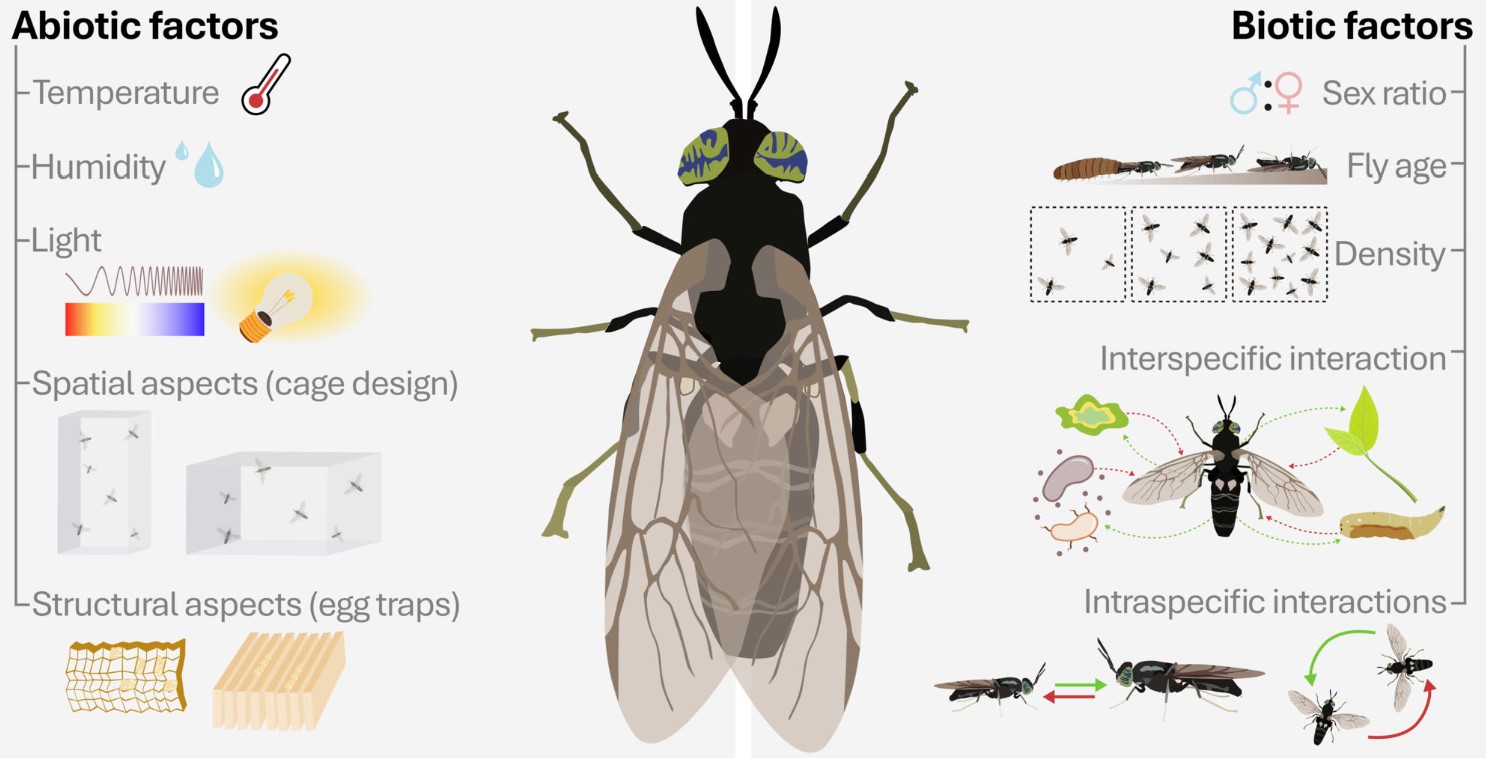 BugBook: Black soldier fly as a model to assess behaviour of insects mass produced as food and feedJeffery K. Tomberlin, Thomas Klammsteiner, Noah Lemke, Pratibha Yadav, and Christoph SandrockJournal of Insects as Food and Feed, May 2025
BugBook: Black soldier fly as a model to assess behaviour of insects mass produced as food and feedJeffery K. Tomberlin, Thomas Klammsteiner, Noah Lemke, Pratibha Yadav, and Christoph SandrockJournal of Insects as Food and Feed, May 2025Abstract Behavioural research and its applications has a rich history in science with direct applications continuing to expand global understanding of ecosystem function, structure, and evolution. The same can be said for such research as related to the applied sciences including entomology. The purpose of this chapter is to provide context to various approaches for assessing behaviour of insects that are mass produced for food and feed. By using the black soldier fly as a model, various approaches for conducting such research are explored along with providing some perspective on the value of such data for optimising insect production. However, it should be noted that this chapter is not exhaustive with regards to variables that can be examined, or the methods employed.
@article{tomberlin_bugbook_2025, title = {{BugBook}: {Black} soldier fly as a model to assess behaviour of insects mass produced as food and feed}, volume = {(in press)}, shorttitle = {{BugBook: Fly behaviour}}, url = {https://brill.com/view/journals/jiff/aop/article-10.1163-23524588-bja10225/article-10.1163-23524588-bja10225.xml}, doi = {10.1163/23524588-bja10225}, language = {eng}, number = {aop}, urldate = {2025-05-15}, journal = {Journal of Insects as Food and Feed}, author = {Tomberlin, Jeffery K. and Klammsteiner, Thomas and Lemke, Noah and Yadav, Pratibha and Sandrock, Christoph}, month = may, year = {2025}, publisher = {Wageningen Academic}, keywords = {choice test, reproduction, experimental design, Published Articles, electrophysiology, ethology}, pages = {1--20}, dimensions = true, } -
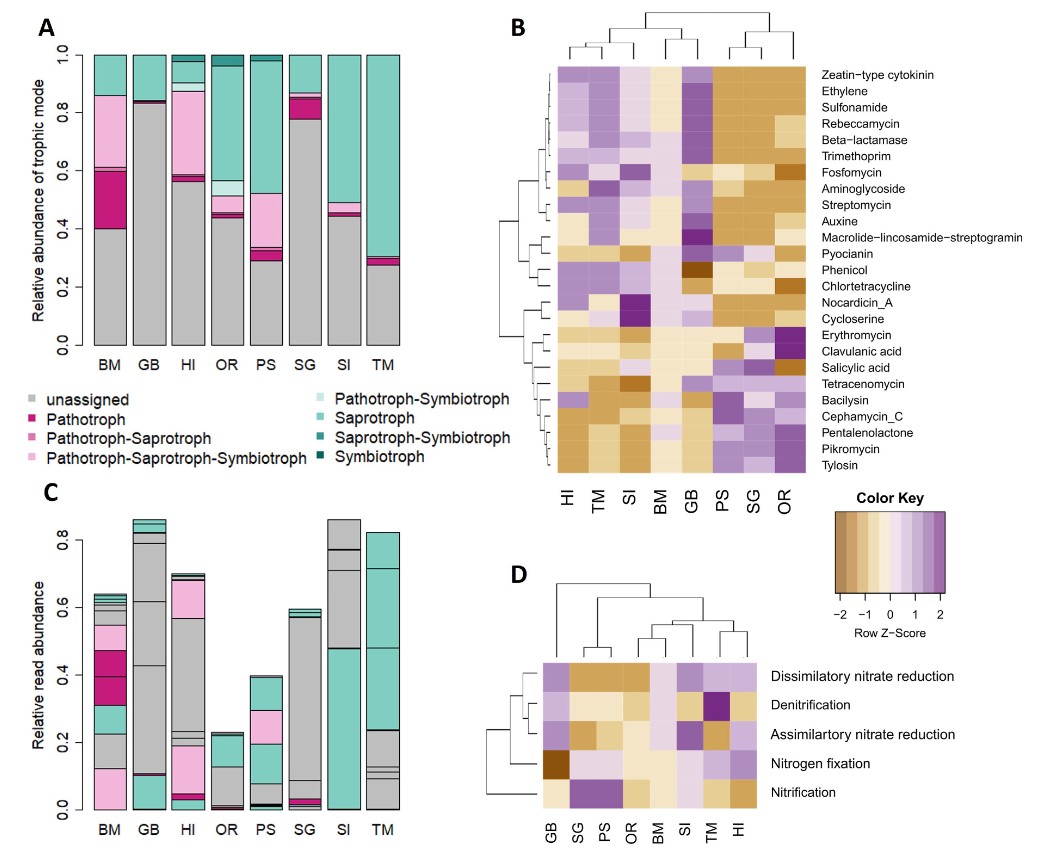 Microbial composition and bioremediation in frass fertilizers from insect-based agri-food waste valorizationMaría Gómez-Brandón*, Dennis Beesigamukama*, Maraike Probst*, Thomas Klammsteiner*, Jian-Qiang Su, Yong-Guan Zhu, and Chrysantus Mbi TangaJournal of Environmental Management, Jun 2025
Microbial composition and bioremediation in frass fertilizers from insect-based agri-food waste valorizationMaría Gómez-Brandón*, Dennis Beesigamukama*, Maraike Probst*, Thomas Klammsteiner*, Jian-Qiang Su, Yong-Guan Zhu, and Chrysantus Mbi TangaJournal of Environmental Management, Jun 2025Insect frass fertilizer is emerging as a sustainable and novel input for improving soil health and crop production; however, research attention on its safety and microbial properties remains limited. Here, we evaluated the levels of heavy metals, pathogens, diversity, abundance, composition and functional roles of bacteria and fungi in frass fertilizer produced by eight edible insect species. Our results revealed the absence of Salmonella spp. In the frass fertilizers produced by all insect species, while the levels of other pathogens and heavy metals were within permissible limits for organic fertilizers. We found that 79–86 % of the variations in bacterial and fungal communities in the frass fertilizers were influenced by the species of insects used in waste recycling. The highest richness of bacteria and fungi was recorded in the frass fertilizers generated from Oryctes rhinoceros and Pachnoda sinuata. Taxonomic classification revealed 36 bacteria phyla across the frass fertilizers, with most belonging to Firmicutes (43 %), Proteobacteria (23 %), and Actinobacteriota (18 %), whereas the main fungal phyla were Ascomycota (80 %) and Basidiomycota (10 %). Functional profiling revealed that most fungi were sapotroph-symbiotrophs, pathogenic saprotrophs, pathotrophs, and symbiotrophic saprotrophs, which are key in organic matter decomposition, nutrient recycling and pathogen suppression. In contrast, the bacteria were mostly associated with antibiotic and phytohormone production, biosynthesis of plant growth regulators, nitrogen metabolism, nitrification, nitrogen fixation, especially in frass fertilizers derived from P. sinuata, Schistocerca gregaria, and Hermetia illucens. Our findings demonstrate the potential of insects to recycle low-value organic wastes into hygienic organic fertilizer and highlight the role of beneficial microbes, which could be harnessed for bioremediation, sustainable soil health management, improved crop productivity and food security.
@article{gomez-brandon_microbial_2025, title = {Microbial composition and bioremediation in frass fertilizers from insect-based agri-food waste valorization}, volume = {386}, issn = {0301-4797}, url = {https://www.sciencedirect.com/science/article/pii/S0301479725017505}, doi = {10.1016/j.jenvman.2025.125774}, urldate = {2025-05-17}, journal = {Journal of Environmental Management}, author = {Gómez-Brandón*, María and Beesigamukama*, Dennis and Probst*, Maraike and Klammsteiner*, Thomas and Su, Jian-Qiang and Zhu, Yong-Guan and Tanga, Chrysantus Mbi}, month = jun, year = {2025}, publisher = {Elsevier}, keywords = {Beneficial microbes, Edible insects, Entomocomposting, Food security, Published Articles, Regenerative agriculture, Soil health}, pages = {125774}, dimension = true, } -
 BugBook: Data analysis methods in studies of insects for food and feedSergiy Smetana, Carl Coudron, David Deruytter, Aditya Francis, Juan Jose Pascual, Thomas Klammsteiner, Noah Lemke, Christoph Sandrock, and Raffaele ZanoliJournal of Insects as Food and Feed, May 2025
BugBook: Data analysis methods in studies of insects for food and feedSergiy Smetana, Carl Coudron, David Deruytter, Aditya Francis, Juan Jose Pascual, Thomas Klammsteiner, Noah Lemke, Christoph Sandrock, and Raffaele ZanoliJournal of Insects as Food and Feed, May 2025Abstract In recent decades, research on insect production for food and feed has expanded significantly, driven by advances in farming, processing, genetics, and sustainability. Various data analysis methods, from traditional statistics to advanced machine learning, are used to optimise aspects of insect-based systems. In production, methods like analysis of variance (ANOVA) and regression analysis help improve breeding conditions and growth rates, while multivariate analyses support processing studies by evaluating nutritional and microbial safety. Genetic research leverages bioinformatics, genome-wide association studies (GWAS), and quantitative genetics to enhance traits like yield and disease resistance. Sustainability assessments use life cycle analysis (LCA) with Monte Carlo simulations to measure environmental impacts. Emerging tools, such as neural networks and support vector machines, are gaining traction for predicting feed conversion ratios and disease detection. Despite progress, a comprehensive guide that bridges classic and novel data analysis methods in insect research is still lacking. This study aims to address this gap by offering an accessible manual for researchers and professionals. It will consolidate methodologies across disciplines, highlighting foundational tools for beginners while showcasing advanced techniques for experts. Topics include the application of tailored methods like chitin and protein accounting, sensory analysis, consumer preference modelling, and data visualisation to improve stakeholder communication. By enhancing methodological rigor and fostering transparency, this guide will promote innovation, facilitate data interchange, and ensure the replicability of findings. Ultimately, it aims to drive sustainable advancements in the mass production of insects for food and feed.
@article{smetana_bugbook_2025, title = {{BugBook}: {Data} analysis methods in studies of insects for food and feed}, volume = {(in press)}, shorttitle = {{BugBook: Data analysis}}, url = {https://brill.com/view/journals/jiff/aop/article-10.1163-23524588-bja10209/article-10.1163-23524588-bja10209.xml}, doi = {10.1163/23524588-bja10209}, language = {eng}, number = {aop}, urldate = {2025-05-23}, journal = {Journal of Insects as Food and Feed}, author = {Smetana, Sergiy and Coudron, Carl and Deruytter, David and Francis, Aditya and Pascual, Juan Jose and Klammsteiner, Thomas and Lemke, Noah and Sandrock, Christoph and Zanoli, Raffaele}, month = may, year = {2025}, publisher = {Wageningen Academic}, keywords = {data analysis methods, genetic research, insect production, machine learning, Published Articles, sustainability assessment}, pages = {1--27}, dimensions = true, } -
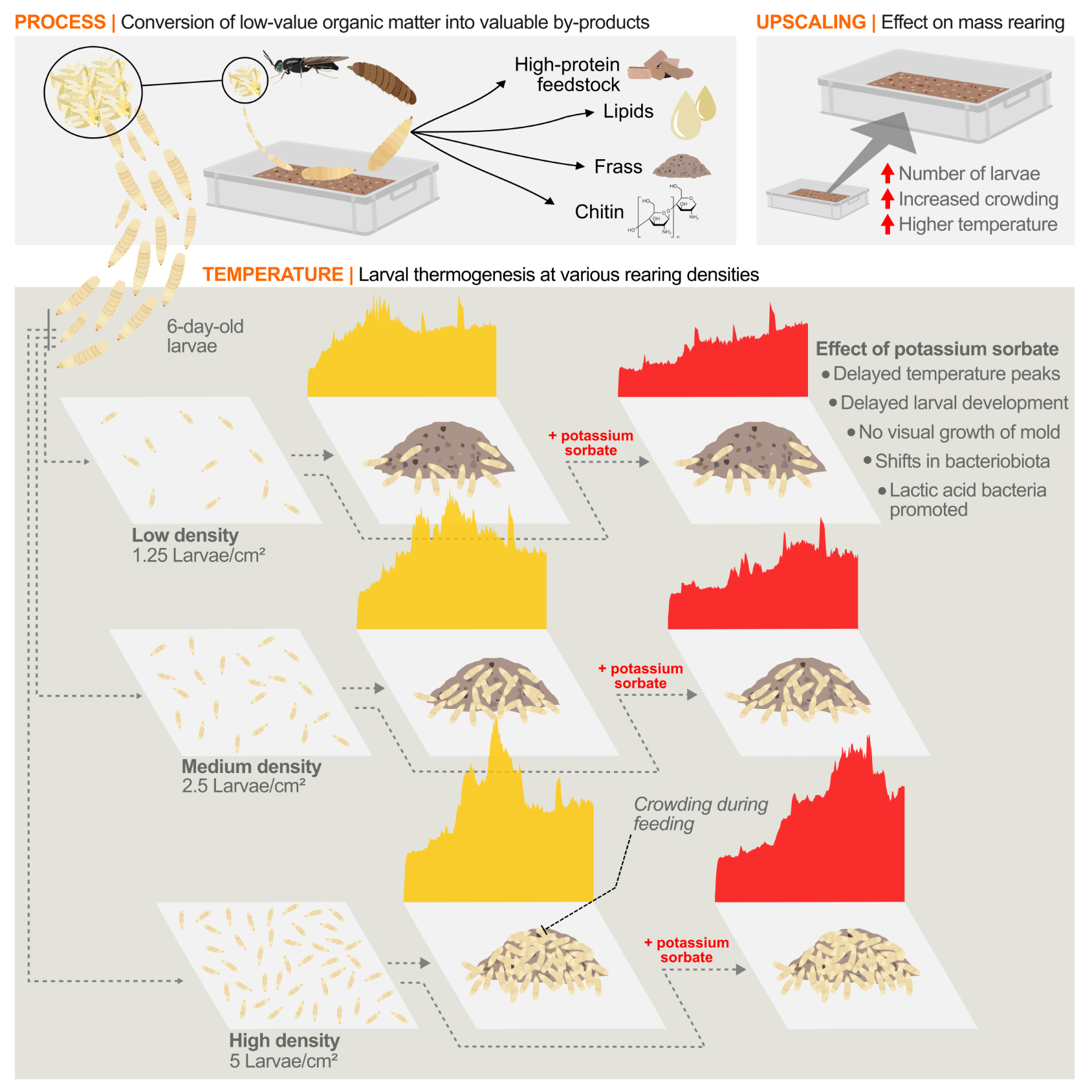 Larval density drives thermogenesis and affects microbiota and substrate properties in black soldier fly trialsThomas Klammsteiner, Carina D. Heussler, Heribert Insam, Birgit C. Schlick-Steiner, and Florian M. SteineriScience, May 2025
Larval density drives thermogenesis and affects microbiota and substrate properties in black soldier fly trialsThomas Klammsteiner, Carina D. Heussler, Heribert Insam, Birgit C. Schlick-Steiner, and Florian M. SteineriScience, May 2025Industrial insect farming has potential for converting low-value organic waste into nutrient-rich insect biomass, producing valuable by-products like organic fertilizers. However, a better understanding of density-related thermogenesis and microbial dynamics is needed to enhance standardization and bridge gaps between laboratory and industry needs. This lab-scale study focuses on the black soldier fly (Hermetia illucens), which exhibits thermogenesis that intensifies with larval population size and its natural crowding behavior. Using high-resolution temperature monitoring and biomolecular methods, we found that doubling larval density (0, 1.25, 2.5, 5 larvae/cm2) increased temperatures by 0.6 to 2.4 °C, depending on the treatment. Adding potassium sorbate altered microbial profiles, increasing Enterobacter and decreasing Providencia, while promoting lactic acid bacteria. Density also impacted pH, water content, dry matter, volatile solids, and ash in the substrate. Our findings provide essential insights into managing microbial and thermal dynamics, offering valuable information for optimizing and standardizing conditions in rearing trials.
@article{klammsteiner_iscience_2025, title = {Larval density drives thermogenesis and affects microbiota and substrate properties in black soldier fly trials}, issn = {2589-0042}, url = {https://www.sciencedirect.com/science/article/pii/S2589004225010557}, doi = {10.1016/j.isci.2025.112794}, urldate = {2025-06-02}, year = {2025}, month = may, journal = {iScience}, volume = {28}, number = {7}, pages = {112794}, language = {eng}, author = {Klammsteiner, Thomas and Heussler, Carina D. and Insam, Heribert and Schlick-Steiner, Birgit C. and Steiner, Florian M.}, keywords = {circular economy, composting, thermal ecology, preservation, microbiome, food waste, heat}, dimensions = true, } -
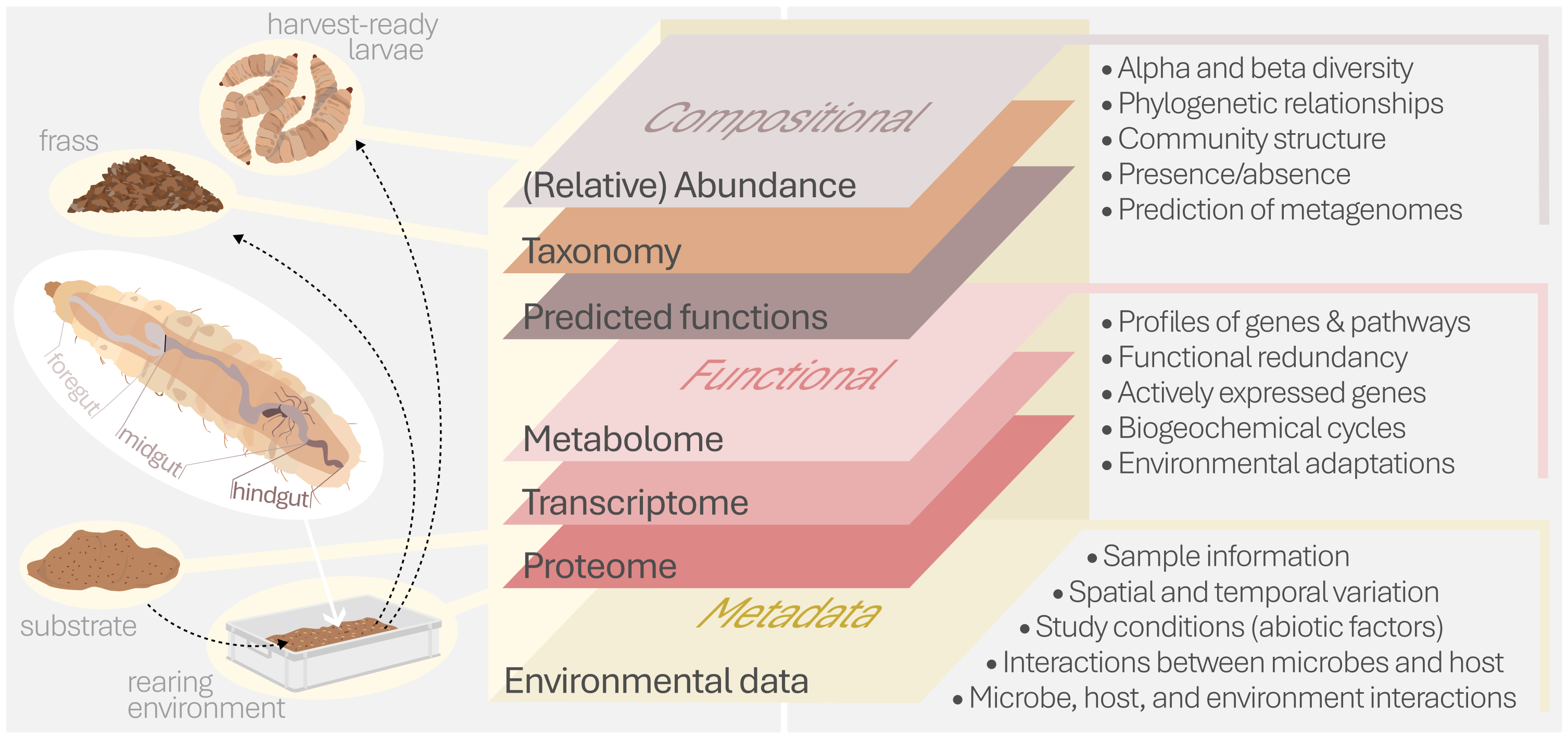 BugBook: How to explore and exploit the insect-associated microbiomeLaurence Auger, Dorothee Tegtmeier, Silvia Caccia, Thomas Klammsteiner, and Jeroen De SmetJournal of Insects as Food and Feed, Jul 2025
BugBook: How to explore and exploit the insect-associated microbiomeLaurence Auger, Dorothee Tegtmeier, Silvia Caccia, Thomas Klammsteiner, and Jeroen De SmetJournal of Insects as Food and Feed, Jul 2025Large scale insect farming is exploring routes to enhance the efficiency, stability, and safety of the bioconversion of low-value substrates into insect-derived building blocks for food, feed, and fertiliser. Along with optimising insect rearing conditions and genetics, the insect microbiome is fundamental for the physiology, development, and adaptation of its host to various environmental conditions. To efficiently explore and exploit this ecosystem, a thorough understanding of its composition, function, and dynamics is required. This article aspires to provide a synopsis of the methodologies used to probe the insect-associated microbiome, primarily focusing on industrially relevant insect species. Key considerations for sample timing, selection, storage, and processing are discussed, emphasising the importance of standardised approaches to facilitate cross-study comparisons and enhance reproducibility. Marker gene and shotgun metagenomic sequencing are contrasted as means to investigate microbiome features, touching upon their respective (dis)advantages and potential use cases. Cultivation-based methods are essential for functional characterisation and translating the potential of insect-derived microorganisms for industrial applications. Direct isolation and enrichment cultures, along with anaerobic and aerobic cultivation techniques, are discussed as well. Methods to engineer microbiomes, such as axenic rearing and synthetic community assembly, have developed as powerful tools for exploring the role of specific microbes in host physiology. Beyond these approaches, metabolomics and metaproteomics are emerging as insightful techniques to dig deeper into microbiome functionality and host-microbe interactions. This article provides a multifaceted outline for researchers investigating the insect-associated microbiome and emphasises the importance of standardised methodologies and reporting for advancing the field.
@article{auger_bugbook_2025, title = {{BugBook}: How to explore and exploit the insect-associated microbiome}, volume = {(accepted for publication)}, shorttitle = {{BugBook: Microbiome}}, url = {}, doi = {10.1163/23524588-bja10256}, language = {eng}, number = {aop}, urldate = {}, journal = {Journal of Insects as Food and Feed}, author = {Auger, Laurence and Tegtmeier, Dorothee and Caccia, Silvia and Klammsteiner, Thomas and De Smet, Jeroen}, month = jul, year = {2025}, publisher = {Wageningen Academic}, keywords = {}, pages = {1-35}, dimensions = true, } -
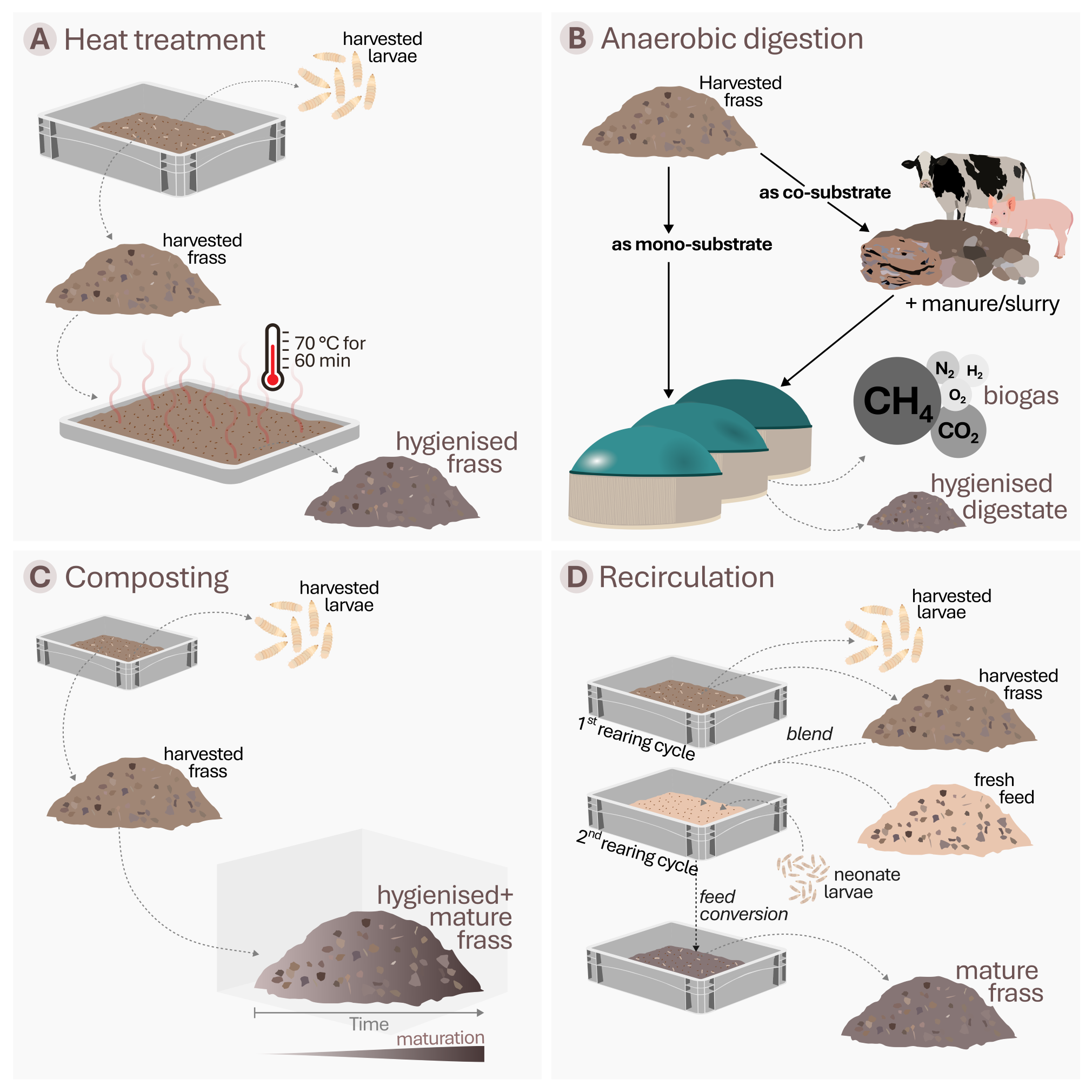 BugBook: Critical considerations for evaluating and applying insect frassIvã Guidini Lopes, Maria Gómez-Brandón, Nadine Praeg, Jonas Claeys, Wael Yakti, Michael Bitterlich, Jeffrey J. Jones, Christoph M. Geilfus, and Thomas KlammsteinerJournal of Insects as Food and Feed, Jun 2025
BugBook: Critical considerations for evaluating and applying insect frassIvã Guidini Lopes, Maria Gómez-Brandón, Nadine Praeg, Jonas Claeys, Wael Yakti, Michael Bitterlich, Jeffrey J. Jones, Christoph M. Geilfus, and Thomas KlammsteinerJournal of Insects as Food and Feed, Jun 2025Insect frass is one of the most abundant products in the insect industry, regardless of the farmed species. Rich inorganic matter and plant nutrients, frass isapromising organicamendment that can be used inagriculture. While many benefits and challenges have been reported, several knowledge gapsremain unanswered, regarding the specific characteristics and mechanismsof its effects on soils and plants,particularlyintermsof the processes driving these effects and interactions.This article aimstodiscuss recent research on frass and identify existing knowledge gaps, and propose strategies to improve research methodologies,increase comparability across studies, and generate more robust results.The topics covered include the evaluation offrass effects on soil physical properties,microbiological dynamics and fertility, as well as its effects on plant growth, development, and metabolism. The article also explores the potential offrass as an antimicrobial agent and highlights the need for stabilising and improvingits quality and safety before it is used inagricultural activities.Looking forward,insect frass holds great promise as a sustainable input for agriculture, food production, and feed systems.
@article{lopes_bugbook_2025, title = {{BugBook}: Critical considerations for evaluating and applying insect frass}, volume = {(accepted for publication)}, shorttitle = {{BugBook: Frass}}, url = {}, doi = {10.1163/23524588-bja10254}, language = {eng}, number = {}, urldate = {}, journal = {Journal of Insects as Food and Feed}, author = {Lopes, Ivã Guidini and Gómez-Brandón, Maria and Praeg, Nadine and Claeys, Jonas and Yakti, Wael and Bitterlich, Michael and Jones, Jeffrey J. and Geilfus, Christoph M. and Klammsteiner, Thomas}, month = jun, year = {2025}, publisher = {Wageningen Academic}, keywords = {}, pages = {1-28}, dimensions = true, } -
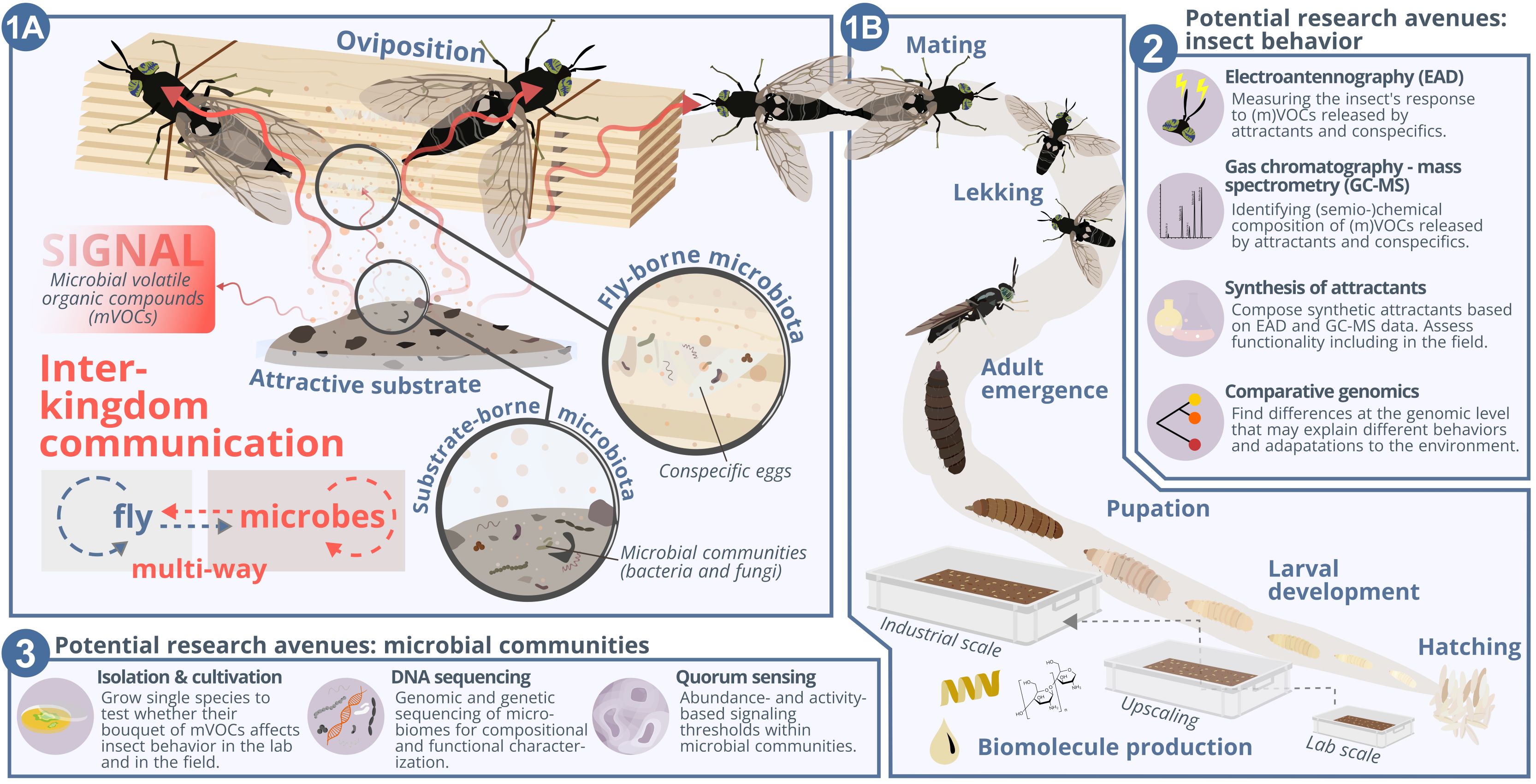 Exploring interkingdom communication: The case of black soldier fly mass-rearingThomas Klammsteiner, Carina D. Heussler, Heribert Insam, Jeffery K. Tomberlin, Birgit C. Schlick-Steiner, and Florian M. SteinerCurrent Opinion in Insect Science, Aug 2025
Exploring interkingdom communication: The case of black soldier fly mass-rearingThomas Klammsteiner, Carina D. Heussler, Heribert Insam, Jeffery K. Tomberlin, Birgit C. Schlick-Steiner, and Florian M. SteinerCurrent Opinion in Insect Science, Aug 2025Interkingdom communication through volatile organic compounds influences interactions among organisms at a level often imperceptible to humans. Artificial settings that depend on the biotechnical exploitation of biological processes, such as the rapidly expanding sector of insect farming, are strongly affected by this often-overlooked multiway communication. Here, we aim to portray the significance of interkingdom communication influencing insect behavior. We use the black soldier fly (Hermetia illucens) as a model system to introduce the necessary actions to improve our understanding of communication between insects and microbes. Successful exploration of this phenomenon could transform bioeconomy by improving insect mass-rearing processes and enhancing insect welfare. By interlocking behavioral and molecular ecology, chemistry, microbiology, and bioinformatics, we can uncover the molecular mechanisms underlying these interactions and develop practical applications for improved industrial practices. Future work should focus on pursuing research avenues to untangle the interwoven nature of insect behavior and microbial communities.
@article{klammsteiner_cois_2025, title = {Exploring interkingdom communication: {The} case of black soldier fly mass-rearing}, copyright = {All rights reserved}, issn = {2214-5745}, shorttitle = {Exploring interkingdom communication}, url = {https://www.sciencedirect.com/science/article/pii/S2214574525000975}, doi = {10.1016/j.cois.2025.101427}, urldate = {2025-08-10}, journal = {Current Opinion in Insect Science}, author = {Klammsteiner, Thomas and Heussler, Carina D. and Insam, Heribert and Tomberlin, Jeffery K. and Schlick-Steiner, Birgit C. and Steiner, Florian M.}, month = aug, volume = {72}, year = {2025}, keywords = {}, pages = {101427}, dimensions = true, } -
 Bacterial communities of wild bee species and the western honey bee (Apis mellifera) (Hymenoptera: Apoidea): Alpine insightsFabian Royer, Julia Schlick-Steiner, Thomas Klammsteiner, Timotheus Kopf, Birgit C. Schlick-Steiner, and Florian M. SteinerJournal of Insect Science, 2025
Bacterial communities of wild bee species and the western honey bee (Apis mellifera) (Hymenoptera: Apoidea): Alpine insightsFabian Royer, Julia Schlick-Steiner, Thomas Klammsteiner, Timotheus Kopf, Birgit C. Schlick-Steiner, and Florian M. SteinerJournal of Insect Science, 2025Wild bees are decreasing in species diversity and populations due to human impact. The abundance of the western honey bee (Apis mellifera L.) experiences an inverse trend, enhancing competition with wild bees and the probability of microbiome exchange. Addressing this exchange, we studied the gut microbiome composition of wild and honey bees, focusing on patterns indicating honey bee influence. Three solitary wild bee species (large scabious mining bee [Andrena hattorfiana F.], grey-backed mining bee (Andrena vaga Panzer), and European orchard bee [Osmia cornuta Latreille]) as well as bumble bees as representatives of eusocial wild bees (Bombus spp. Latreille) and honey bees were sampled in the Austrian Alps. Subsequent 16S ribosomal DNA sequencing revealed the composition of the bacterial communities. The bee groups differed concerning their bacterial composition, with honey bees having the least variation among individuals and a low number of exclusive bacterial taxa and bumble bees the highest bacterial diversity. High honey bee densities corresponded with lower bacterial diversity in wild bees and a higher bacterial similarity between wild and honey bees. Some bacterial taxa were found for the first time in the studied bee groups. Furthermore, the composition of bacterial communities differed between solitary and social bees. We found the first hints that high honey bee density negatively impacts wild bees through alterations of wild bee microbiomes. Future studies should focus on understanding microbiome transmission mechanisms and their consequences for wild bees. Suggestions on how to consider wild bee fitness are indispensable in halting the biodiversity crisis.
@article{royer_bees_2025, title = {Bacterial communities of wild bee species and the western honey bee (Apis mellifera) (Hymenoptera: Apoidea): Alpine insights}, copyright = {All rights reserved}, issn = {}, shorttitle = {}, url = {}, doi = {10.1093/jisesa/ieaf095}, urldate = {}, journal = {Journal of Insect Science}, author = {Royer, Fabian and Schlick-Steiner, Julia and Klammsteiner, Thomas and Kopf, Timotheus and Schlick-Steiner, Birgit C. and Steiner, Florian M.}, month = {}, volume = {25}, number = {6}, year = {2025}, keywords = {Apidae, insect pollinator decline, intestinal microbiome, spillover, 16S rDNA metabarcoding}, pages = {ieaf095}, dimensions = true, }
2024
-
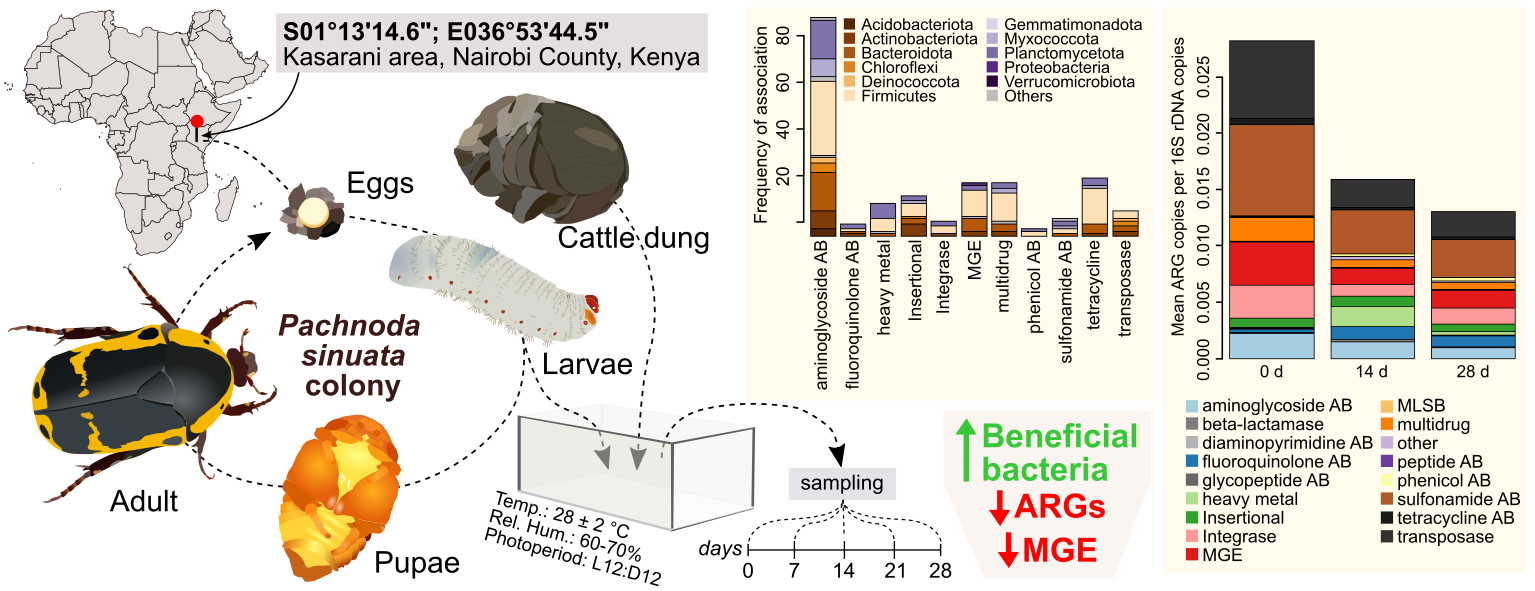 Garden fruit chafer (Pachnoda sinuata L.) accelerates recycling and bioremediation of animal wasteMaría Gómez-Brandòn, Dennis Beesigamukama, Maraike Probst, Thomas Klammsteiner, Y.Y. Zhou, Y.-G. Zhou, and Chrysantus M. TangaWaste Management, Jan 2024
Garden fruit chafer (Pachnoda sinuata L.) accelerates recycling and bioremediation of animal wasteMaría Gómez-Brandòn, Dennis Beesigamukama, Maraike Probst, Thomas Klammsteiner, Y.Y. Zhou, Y.-G. Zhou, and Chrysantus M. TangaWaste Management, Jan 2024Bioconversion of livestock wastes using insect larvae represents an emerging and effective strategy for waste management. However, knowledge on the role of the garden fruit chafer (Pachnoda sinuata L.) in waste recycling and influence on the diversity of microbial community in frass fertilizer is limited. Here, we determined whether and to what extent the conversion of cattle dung into insect frass fertilizer by P. sinuata influences the frass’ microbial community and its associated antibiotic resistance genes abundance. Pachnoda sinuata larvae were used to valorise cattle dung into frass fertilizer; samples were collected weekly to determine the composition of bacteria and fungi, and antibiotic resistant genes using molecular tools. Results revealed that bioconversion of cattle dung by P. sinuata larvae significantly increased the richness of beneficial bacteria in the frass fertilizer by 2.5-folds within 28 days, but fungal richness did not vary during the study. Treatment of cattle dung with P. sinuata larvae caused 2 – 3-folds decrease in the genes conferring resistance to commonly used antibiotics such as aminoglycoside, diaminopyrimidine, multidrug, sulfonamide and tetracycline within 14 days. Furthermore, the recycling cattle dung using considerably reduced the abundance of mobile genetic elements known to play critical roles in the horizontal transfer of antibiotic resistance genes between organisms. This study highlights the efficiency of saprohytic insects in recycling animal manure and suppressing manure-borne pathogens in the organic fertilizer products, opening new market opportunities for innovative and safe bio-based products and achieving efficient resource utilization in a circular and green economy.
@article{gomez-brandon_garden_2023, title = {Garden fruit chafer (<i>Pachnoda sinuata</i> L.) accelerates recycling and bioremediation of animal waste}, copyright = {All rights reserved}, journal = {Waste Management}, volume = {173}, pages = {131-140}, publisher = {Elsevier}, author = {Gómez-Brandòn, María and Beesigamukama, Dennis and Probst, Maraike and Klammsteiner, Thomas and Zhou, Y.Y. and Zhou, Y.-G. and Tanga, Chrysantus M.}, month = jan, year = {2024}, doi = {10.1016/j.wasman.2023.11.019}, dimensions = true, } -
 Primary study on frass fertilizers from mass-reared insects: Species variation, heat treatment effects, and implications for soil application at laboratory scaleNadine Praeg, and Thomas KlammsteinerJournal of Environmental Management, Apr 2024
Primary study on frass fertilizers from mass-reared insects: Species variation, heat treatment effects, and implications for soil application at laboratory scaleNadine Praeg, and Thomas KlammsteinerJournal of Environmental Management, Apr 2024Insect farming has gained popularity as a resource-efficient and eco-friendly method for managing organic wastes by converting them into high-quality protein, fat, and frass. Insect frass is a powerful organic fertilizer that enriches the soil with essential plant nutrients and enhances plant defense mechanisms through chitin stimulation. Given the importance of frass commercialization for many insect farmers and the use of increasingly diverse organic wastes as insect feedstocks, there is a need for legal guidelines to enable clean production practices. The recent introduction of a legal definition for frass and heat treatment requirements by the EU commission marks a significant step towards standardizing its quality; however, little is known about the processes shaping its nutritional profiles and contributing to its maturation. Our study addresses key knowledge gaps in frass composition and production practices. Here, we analyzed the physicochemical, plant-nutritional, and microbiological properties of black soldier fly, yellow mealworm, and Jamaican field cricket frass from mass-rearing operations and assessed the impact of hygienizing heat treatment on fertilizer properties and frass microbiota. The results showed that frass properties varied significantly across insect species, revealing concentrations of plant-available nutrients as high as 7000 μg NH4+-N, 150 μg NO2–NO3–N, and 20 mg available P per g of total solids. Heat treatment reduced microbial activity, biomass, and viable counts of pathogenic Escherichia coli and Salmonella spp. In terms of frass microbiome composition, alpha diversity showed no significant differences between fresh and heat-treated frass samples; however, significant differences in microbial community composition were observed across the three insect species. Despite heat treatment, soil application of frass reactivated and boosted soil microbial activity, inducing up to a 25-fold increase in microbial respiration, suggesting no long-term detrimental effects on microorganisms. These findings not only enhance our understanding of insect frass as a nutrient-rich organic fertilizer but also have implications for regulatory frameworks, underscoring its promising potential for soil health and nutrient cycling. However, it is important to recognize the primary nature of this research, conducted at laboratory scale and over a short term. Future studies should aim to validate these findings in agricultural settings and explore additional factors influencing frass properties and its (long-term) interaction with soil ecosystems.
@article{praeg_frassterile_2024, title = {Primary study on frass fertilizers from mass-reared insects: Species variation, heat treatment effects, and implications for soil application at laboratory scale}, volume = {356}, copyright = {All rights reserved}, issn = {0301-4797}, url = {https://www.sciencedirect.com/science/article/pii/S030147972400608X}, doi = {10.1016/j.jenvman.2024.120622}, language = {English}, urldate = {2024-03-21}, journal = {Journal of Environmental Management}, author = {Praeg, Nadine and Klammsteiner, Thomas}, month = apr, year = {2024}, publisher = {Elsevier}, pages = {120622}, dimensions = true, } -
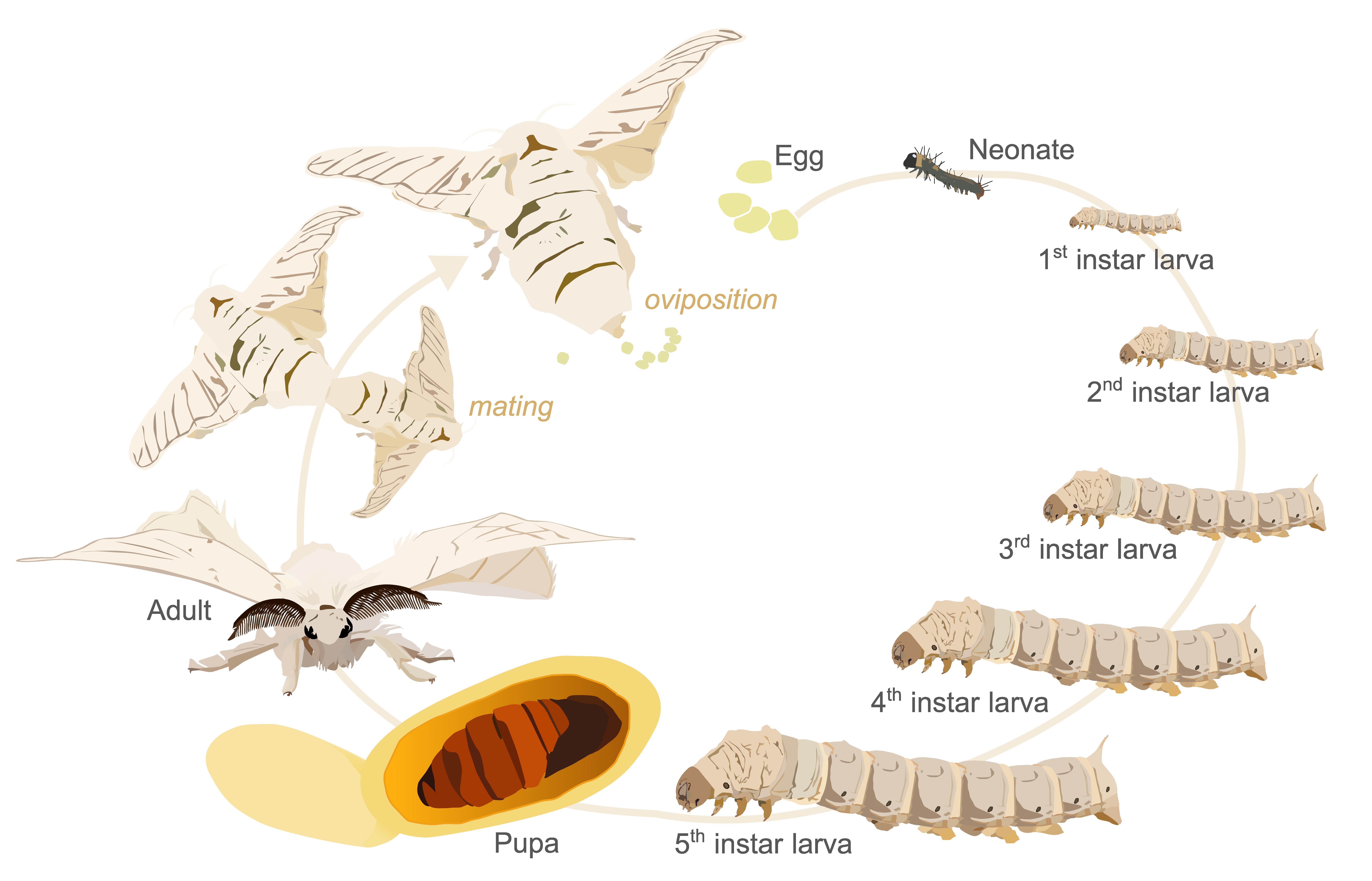 Lactic acid bacteria from Bombyx mori frass: Probiotic properties and antagonistic activitiesSiripuk Suraporn, Sopa Cansee, Sebastian Hupfauf, and Thomas KlammsteinerAgriculture, Jun 2024
Lactic acid bacteria from Bombyx mori frass: Probiotic properties and antagonistic activitiesSiripuk Suraporn, Sopa Cansee, Sebastian Hupfauf, and Thomas KlammsteinerAgriculture, Jun 2024Insect farming is gaining attention as a promising area for exploring probiotic bacteria, which can benefit both insect health and various industries. Silkworm farming is a key industry in Thailand; however, challenges such as disease susceptibility and optimising growth require innovative solutions for sustainable practices. Our study addresses this by assessing lactic acid bacteria (LAB) in native Thai silkworm faeces, which accumulate as natural by-products during the rearing process. We conducted biochemical tests, including those for catalase, haemolytic activity, bile salt tolerance, antimicrobial activity, antibiotic susceptibility, and cell surface hydrophobicity, along with taxonomic classification. Out of 102 isolates, eight potential probiotics were selected, with five showing strong probiotic traits like acid and bile salt tolerance and cell surface hydrophobicity, enhancing gut survivability. These isolates also displayed antagonistic activity against pathogens like Staphylococcus aureus, Salmonella typhimurium, Escherichia coli, and Pseudomonas aeruginosa. Safety assessments confirmed their safety, with no haemolytic activity and sensitivity to antibiotics like chloramphenicol and amoxicillin. These LAB isolates (SP04, SP06, SP44, SP64, and SP67), identified as Enterococcus faecalis strain NBRC 100481, show promise as in vitro probiotics for silkworm rearing, calling for further in vivo evaluation.
@article{suraporn_probiosilk_2024, title = {Lactic acid bacteria from <i>Bombyx mori</i> frass: Probiotic properties and antagonistic activities}, volume = {14}, copyright = {http://creativecommons.org/licenses/by/3.0/}, issn = {2077-0472}, url = {https://www.mdpi.com/2077-0472/14/6/924}, doi = {10.3390/agriculture14060924}, language = {en}, number = {6}, urldate = {2024-06-11}, journal = {Agriculture}, author = {Suraporn, Siripuk and Cansee, Sopa and Hupfauf, Sebastian and Klammsteiner, Thomas}, month = jun, year = {2024}, publisher = {Multidisciplinary Digital Publishing Institute}, pages = {924}, dimensions = true, }
2023
-
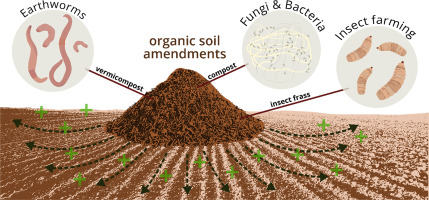 Biology of compostHeribert Insam, Thomas Klammsteiner, and María Gómez-BrandònIn Encyclopedia of Soils in the Environment, Jun 2023
Biology of compostHeribert Insam, Thomas Klammsteiner, and María Gómez-BrandònIn Encyclopedia of Soils in the Environment, Jun 2023The chapter addresses the source materials for composting processes, the microbes and phases involved in the process and quality criteria for composts. The focus is on composting in its common meaning, and two fauna-driven processes involving compost worms and the black soldier fly. Further, some inorganic amendments like biomass ashes and biochar are discussed. Ultimately, the overall effects of composts on soil, its microbiota and plants are discussed, and put in context with carbon mitigation and climate effects.
@incollection{insam_biology_2023, edition = {2}, title = {Biology of compost}, copyright = {All rights reserved}, isbn = {978-0-12-409548-9}, url = {https://www.sciencedirect.com/science/article/pii/B9780128229743001786}, language = {en}, urldate = {2023-02-22}, booktitle = {Encyclopedia of {Soils} in the {Environment}}, publisher = {Elsevier}, author = {Insam, Heribert and Klammsteiner, Thomas and Gómez-Brandòn, María}, year = {2023}, doi = {10.1016/B978-0-12-822974-3.00178-6}, keywords = {Black soldier fly, Compost, Frass, Organic fertilizer, Vermicompost}, dimensions = true, } -
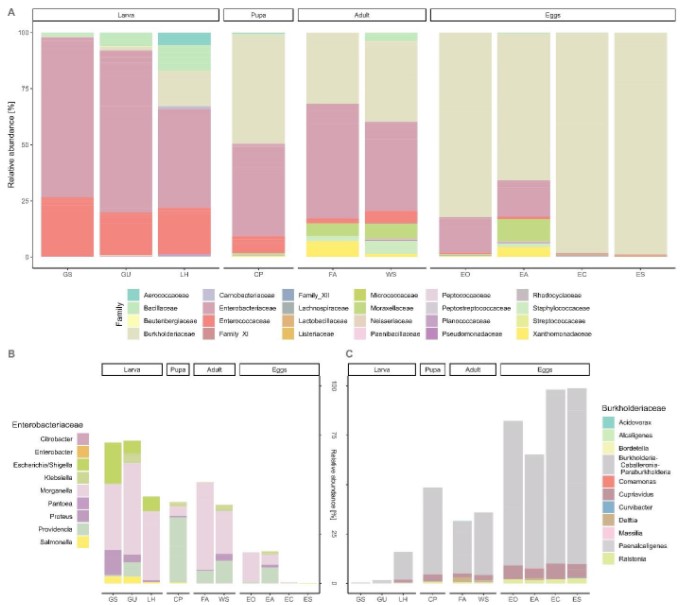 Microbial influences on black soldier fly reproduction: A focus on egg surface colonizationCarina Desirée Heussler*, Thomas Klammsteiner*, Katharina T. Stonig, Heribert Insam, Birgit C. Schlick-Steiner, and Florian M. SteinerSep 2023
Microbial influences on black soldier fly reproduction: A focus on egg surface colonizationCarina Desirée Heussler*, Thomas Klammsteiner*, Katharina T. Stonig, Heribert Insam, Birgit C. Schlick-Steiner, and Florian M. SteinerSep 2023Background: The growing global population increases the demand for protein, while the management of organic waste is becoming more challenging. Alternative protein sources are needed to reduce the negative environmental impact of food production. Lately, the black soldier fly (BSF) has been proposed as an ideal animal protein substitute due to its ability to consume and reduce diverse organic waste, thus solving two problems at the same time. Mass-rearing of BSF depends on flourishing reproduction, which is influenced by environmental and physiological factors. BSF females oviposit egg clutches near decomposing organic matter and conspecific eggs, with studies highlighting the crucial role of microorganisms in oviposition. In this study, we focus on the surface microbiota of the egg and its origin. We investigated if the microbiota are inoculated before, during, or actively after oviposition. For this purpose, we analysed the microbiota in the haemolymph and gut of larvae raised on sterilized and non-sterilized feed, the pupal cell pulp, the wash of the egg-laying apparatus and the eggs directly collected after oviposition, the ovarian eggs and the empty female abdomen, the eggs with contact to adult BSF, and sterilized eggs to assess the stage in BSF development during which the microbial colonization of the egg surface occurs. Results: Our analysis revealed distinct bacterial profiles across life stages, indicating a shift from larval dominance of Enterobacteriaceae to a dominance of Burkholderiaceae on all analysed eggs. On genus level, larval stages were characterized by Morganella sp., Escherichia sp., and Proteus sp., transitioning later to less diverse communities in egg samples predominated by Burkholderia-Caballeronia-Paraburkholderia sp. While eggs from clutches and directly collected from the ovipositor generated viable offspring, surface sterilized eggs and eggs dissected from the ovary turned out to be nonviable. In microbiological cultivation trials, the established sterilization protocol was shown to be effective in removing viable microorganisms from the egg’s surface. Conclusion: Our study reveals that while a predominant microbiota persists throughout all life stages, its composition undergoes a progressive transformation during maturation, particularly before oviposition. Gaining deeper insights into egg surface microbiota and the cues guiding oviposition has the potential to boost egg production and simplify mass harvesting of BSF larvae.
@article{heussler_microbial_2023, type = {preprint}, title = {Microbial influences on black soldier fly reproduction: A focus on egg surface colonization}, copyright = {All rights reserved}, shorttitle = {Microbial influences on black soldier fly reproduction}, url = {https://www.researchsquare.com/article/rs-3314156/v1}, urldate = {2023-09-21}, publisher = {Research Square}, author = {Heussler*, Carina Desirée and Klammsteiner*, Thomas and Stonig, Katharina T. and Insam, Heribert and Schlick-Steiner, Birgit C. and Steiner, Florian M.}, month = sep, year = {2023}, doi = {10.21203/rs.3.rs-3314156/v1}, dimensions = true, } -
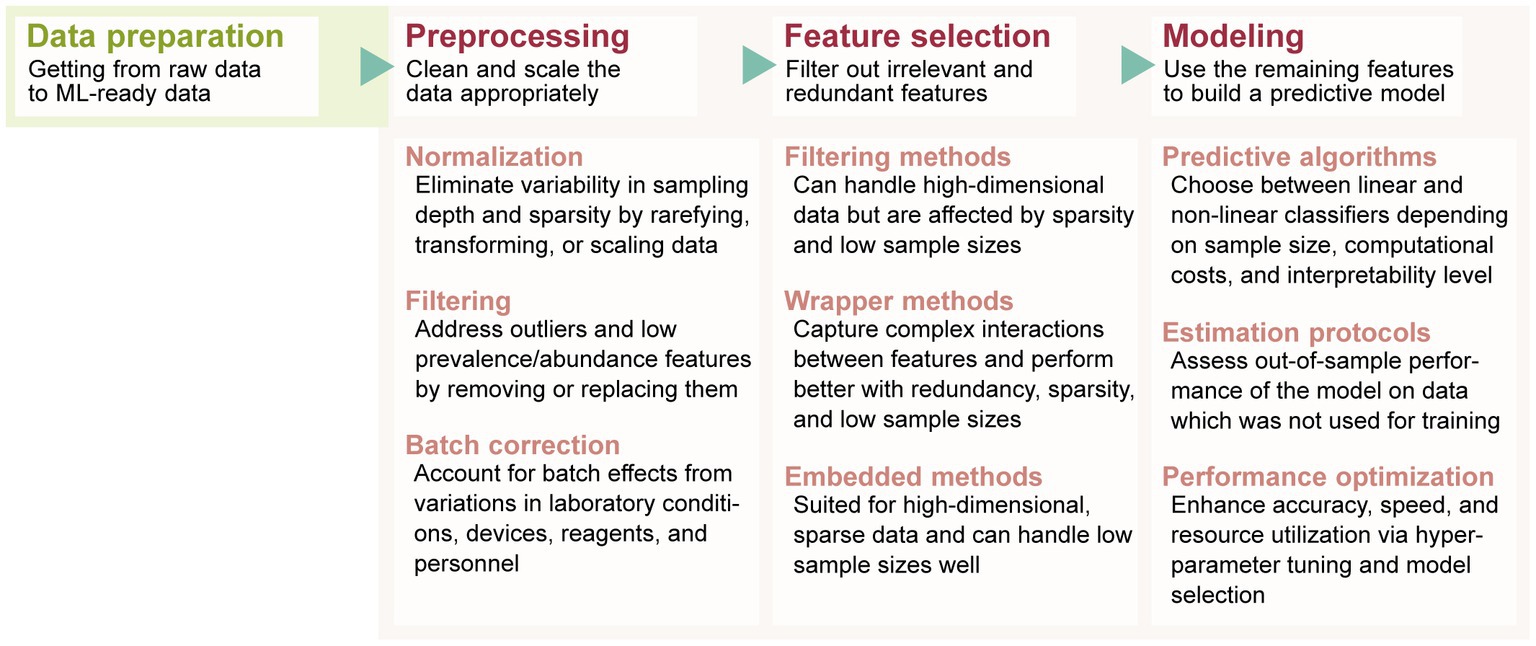 Machine learning approaches in microbiome research: challenges and best practicesGeorgios Papoutsoglou, Sonia Tarazona, Marta B. Lopes, Thomas Klammsteiner, Eliana Ibrahimi, Julia Eckenberger, Pierfrancesco Novielli, Alberto Tonda, Andrea Simeon, Rajesh Shigdel, Stéphane Béreux, Giacomo Vitali, Sabina Tangaro, Leo Lahti, Andriy Temko, Marcus J. Claesson, and Magali BerlandFrontiers in Microbiology, Sep 2023
Machine learning approaches in microbiome research: challenges and best practicesGeorgios Papoutsoglou, Sonia Tarazona, Marta B. Lopes, Thomas Klammsteiner, Eliana Ibrahimi, Julia Eckenberger, Pierfrancesco Novielli, Alberto Tonda, Andrea Simeon, Rajesh Shigdel, Stéphane Béreux, Giacomo Vitali, Sabina Tangaro, Leo Lahti, Andriy Temko, Marcus J. Claesson, and Magali BerlandFrontiers in Microbiology, Sep 2023Microbiome data predictive analysis within a machine learning (ML) workflow presents numerous domain-specific challenges involving preprocessing, feature selection, predictive modeling, performance estimation, model interpretation, and the extraction of biological information from the results. To assist decision-making, we offer a set of recommendations on algorithm selection, pipeline creation and evaluation, stemming from the COST Action ML4Microbiome. We compared the suggested approaches on a multi-cohort shotgun metagenomics dataset of colorectal cancer patients, focusing on their performance in disease diagnosis and biomarker discovery. It is demonstrated that the use of compositional transformations and filtering methods as part of data preprocessing does not always improve the predictive performance of a model. In contrast, the multivariate feature selection, such as the Statistically Equivalent Signatures algorithm, was effective in reducing the classification error. When validated on a separate test dataset, this algorithm in combination with random forest modeling, provided the most accurate performance estimates. Lastly, we showed how linear modeling by logistic regression coupled with visualization techniques such as Individual Conditional Expectation (ICE) plots can yield interpretable results and offer biological insights. These findings are significant for clinicians and non-experts alike in translational applications.
@article{papoutsoglou_machine_2023, title = {Machine learning approaches in microbiome research: challenges and best practices}, volume = {14}, copyright = {All rights reserved}, issn = {1664-302X}, shorttitle = {Machine learning approaches in microbiome research}, url = {https://www.frontiersin.org/articles/10.3389/fmicb.2023.1261889}, doi = {10.3389/fmicb.2023.1261889}, urldate = {2023-09-22}, journal = {Frontiers in Microbiology}, author = {Papoutsoglou, Georgios and Tarazona, Sonia and Lopes, Marta B. and Klammsteiner, Thomas and Ibrahimi, Eliana and Eckenberger, Julia and Novielli, Pierfrancesco and Tonda, Alberto and Simeon, Andrea and Shigdel, Rajesh and Béreux, Stéphane and Vitali, Giacomo and Tangaro, Sabina and Lahti, Leo and Temko, Andriy and Claesson, Marcus J. and Berland, Magali}, year = {2023}, publisher = {Frontiers}, dimensions = true, } -
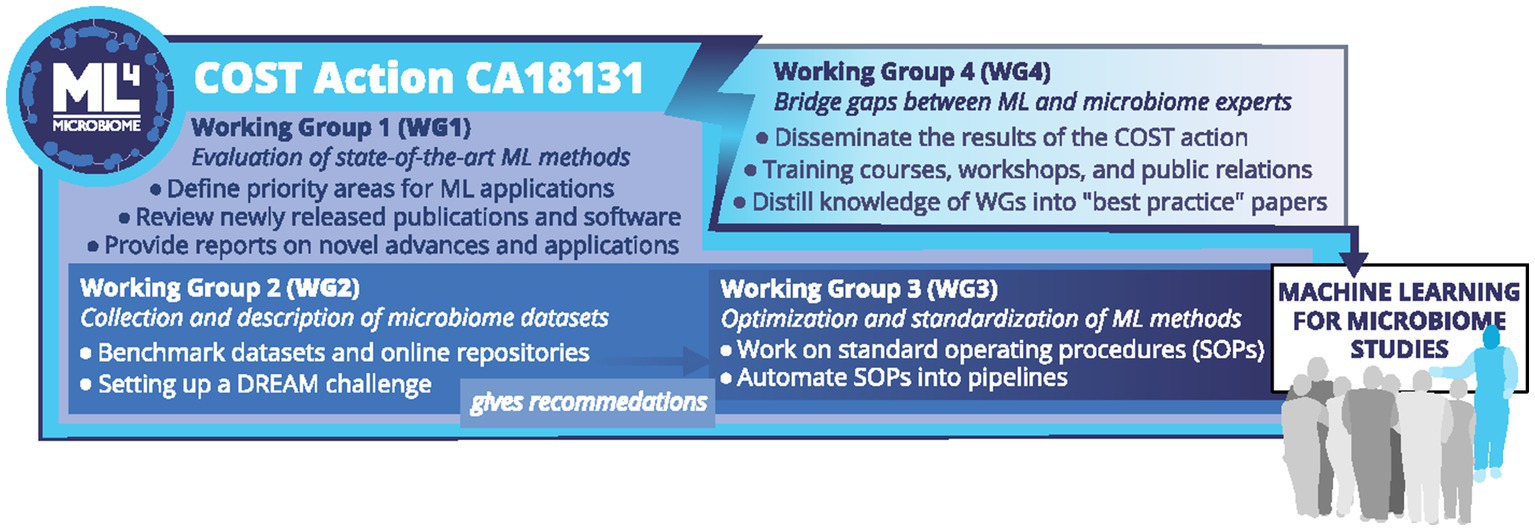 Advancing microbiome research with machine learning: key findings from the ML4Microbiome COST actionDomenica D’Elia, Jaak Truu, Leo Lahti, Magali Berland, Georgios Papoutsoglou, Michelangelo Ceci, Aldert Zomer, Marta B. Lopes, Eliana Ibrahimi, Aleksandra Gruca, Alina Nechyporenko, Marcus Frohme, Thomas Klammsteiner, Enrique Carrillo-de Santa Pau, Laura Judith Marcos-Zambrano, Karel Hron, Gianvito Pio, Andrea Simeon, Ramona Suharoschi, Isabel Moreno-Indias, Andriy Temko, Miroslava Nedyalkova, Elena-Simona Apostol, Ciprian-Octavian Truică, Rajesh Shigdel, Jasminka Hasić Telalović, Erik Bongcam-Rudloff, Piotr Przymus, Naida Babić Jordamović, Laurent Falquet, Sonia Tarazona, Alexia Sampri, Gaetano Isola, David Pérez-Serrano, Vladimir Trajkovik, Lubos Klucar, Tatjana Loncar-Turukalo, Aki S. Havulinna, Christian Jansen, Randi J. Bertelsen, and Marcus Joakim ClaessonFrontiers in Microbiology, Sep 2023
Advancing microbiome research with machine learning: key findings from the ML4Microbiome COST actionDomenica D’Elia, Jaak Truu, Leo Lahti, Magali Berland, Georgios Papoutsoglou, Michelangelo Ceci, Aldert Zomer, Marta B. Lopes, Eliana Ibrahimi, Aleksandra Gruca, Alina Nechyporenko, Marcus Frohme, Thomas Klammsteiner, Enrique Carrillo-de Santa Pau, Laura Judith Marcos-Zambrano, Karel Hron, Gianvito Pio, Andrea Simeon, Ramona Suharoschi, Isabel Moreno-Indias, Andriy Temko, Miroslava Nedyalkova, Elena-Simona Apostol, Ciprian-Octavian Truică, Rajesh Shigdel, Jasminka Hasić Telalović, Erik Bongcam-Rudloff, Piotr Przymus, Naida Babić Jordamović, Laurent Falquet, Sonia Tarazona, Alexia Sampri, Gaetano Isola, David Pérez-Serrano, Vladimir Trajkovik, Lubos Klucar, Tatjana Loncar-Turukalo, Aki S. Havulinna, Christian Jansen, Randi J. Bertelsen, and Marcus Joakim ClaessonFrontiers in Microbiology, Sep 2023The rapid development of machine learning (ML) techniques has opened up the data-dense field of microbiome research for novel therapeutic, diagnostic, and prognostic applications targeting a wide range of disorders, which could substantially improve healthcare practices in the era of precision medicine. However, several challenges must be addressed to exploit the benefits of ML in this field fully. In particular, there is a need to establish “gold standard” protocols for conducting ML analysis experiments and improve interactions between microbiome researchers and ML experts. The Machine Learning Techniques in Human Microbiome Studies (ML4Microbiome) COST Action CA18131 is a European network established in 2019 to promote collaboration between discovery-oriented microbiome researchers and data-driven ML experts to optimize and standardize ML approaches for microbiome analysis. This perspective paper presents the key achievements of ML4Microbiome, which include identifying predictive and discriminatory ‘omics’ features, improving repeatability and comparability, developing automation procedures, and defining priority areas for the novel development of ML methods targeting the microbiome. The insights gained from ML4Microbiome will help to maximize the potential of ML in microbiome research and pave the way for new and improved healthcare practices.
@article{delia_advancing_2023, title = {Advancing microbiome research with machine learning: key findings from the ML4Microbiome COST action}, volume = {14}, copyright = {All rights reserved}, issn = {1664-302X}, shorttitle = {Advancing microbiome research with machine learning}, url = {https://www.frontiersin.org/articles/10.3389/fmicb.2023.1257002}, doi = {10.3389/fmicb.2023.1257002}, urldate = {2023-09-21}, journal = {Frontiers in Microbiology}, author = {D’Elia, Domenica and Truu, Jaak and Lahti, Leo and Berland, Magali and Papoutsoglou, Georgios and Ceci, Michelangelo and Zomer, Aldert and Lopes, Marta B. and Ibrahimi, Eliana and Gruca, Aleksandra and Nechyporenko, Alina and Frohme, Marcus and Klammsteiner, Thomas and Pau, Enrique Carrillo-de Santa and Marcos-Zambrano, Laura Judith and Hron, Karel and Pio, Gianvito and Simeon, Andrea and Suharoschi, Ramona and Moreno-Indias, Isabel and Temko, Andriy and Nedyalkova, Miroslava and Apostol, Elena-Simona and Truică, Ciprian-Octavian and Shigdel, Rajesh and Telalović, Jasminka Hasić and Bongcam-Rudloff, Erik and Przymus, Piotr and Jordamović, Naida Babić and Falquet, Laurent and Tarazona, Sonia and Sampri, Alexia and Isola, Gaetano and Pérez-Serrano, David and Trajkovik, Vladimir and Klucar, Lubos and Loncar-Turukalo, Tatjana and Havulinna, Aki S. and Jansen, Christian and Bertelsen, Randi J. and Claesson, Marcus Joakim}, year = {2023}, publisher = {Frontiers}, dimensions = true, } -
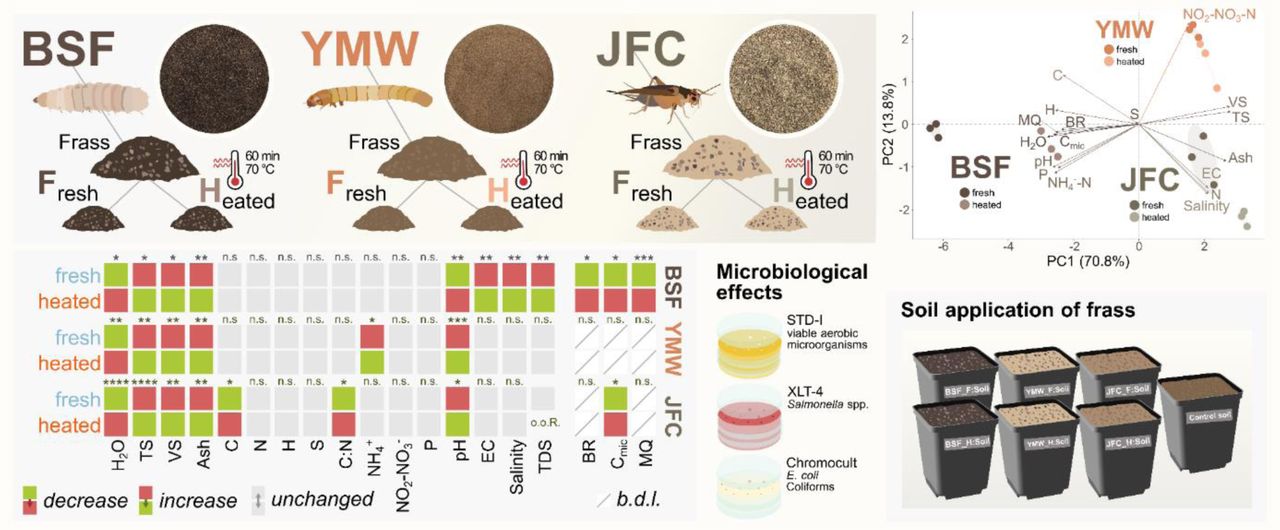 Frass fertilizers from mass-reared insects: species variation, heat treatment effects, and implications for soil applicationNadine Praeg, and Thomas KlammsteinerSep 2023
Frass fertilizers from mass-reared insects: species variation, heat treatment effects, and implications for soil applicationNadine Praeg, and Thomas KlammsteinerSep 2023Insect farming has gained popularity as a resource-efficient and eco-friendly method of managing organic wastes by converting them into high-quality protein, fat, and frass. Insect frass is a powerful organic fertilizer, enriching the soil with essential plant nutrients and enhancing plant defense mechanisms through chitin stimulation. Given the importance of frass commercialization for many insect farmers and the use of increasingly diverse organic wastes as insect feedstock, the need for legal guidelines to enable clean production practices has emerged. The recent introduction of a legal definition for frass and heat treatment requirements by the EU commission marks a significant step towards standardizing its quality. However, frass composition is influenced by numerous factors, and little is known about the processes shaping its nutritional profiles and contributing to its maturation. Here, we analyzed the physicochemical, plant-nutritional, and microbiological properties of black soldier fly, yellow mealworm, and Jamaican field cricket frass from mass-rearing operations and assessed the impact of hygienizing heat treatment. Frass properties varied significantly across insect species, revealing concentrations of plant available nutrients reaching as high as 7000 μg NH4+, 150 μg NO2-NO3–N, and 20 mg P per g of total solids. Heat treatment affected microbial activity by reducing basal respiration and microbial biomass carbon, but also reducing viable counts of pathogenic E. coli and Salmonella sp. In terms of microbiome composition, alpha diversity showed no significant differences between fresh and heat-treated frass samples within each insect species, but significant distinctions were observed across the three insect species. The soil application of frass reactivated and boosted soil microbial activity, suggesting no long-term detrimental effects on microorganisms. These results further highlight the potential of insect frass as nutrient rich organic fertilizer, with promising benefits for soil health and nutrient cycling.
@article{praeg_frass_2023, type = {preprint}, title = {Frass fertilizers from mass-reared insects: species variation, heat treatment effects, and implications for soil application}, copyright = {© 2023, Posted by Cold Spring Harbor Laboratory. This pre-print is available under a Creative Commons License (Attribution-NonCommercial-NoDerivs 4.0 International), CC BY-NC-ND 4.0, as described at http://creativecommons.org/licenses/by-nc-nd/4.0/}, shorttitle = {Frass fertilizers from mass-reared insects}, url = {https://www.biorxiv.org/content/10.1101/2023.09.28.559882v1}, doi = {10.1101/2023.09.28.559882}, language = {en}, urldate = {2023-09-29}, dimensions = true, publisher = {bioRxiv}, author = {Praeg, Nadine and Klammsteiner, Thomas}, month = sep, year = {2023}, } -
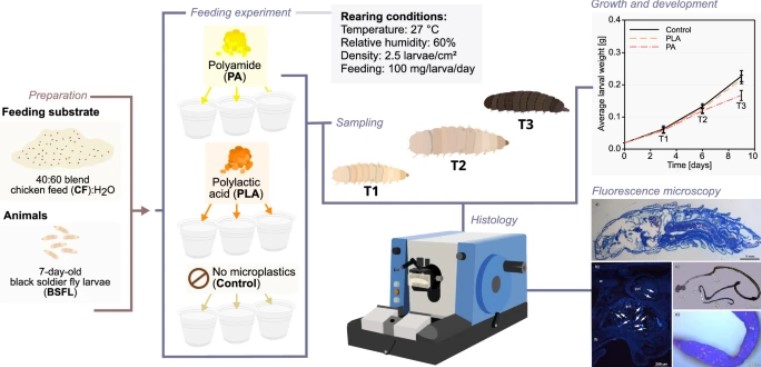 A comparative study of effects of biodegradable and non-biodegradable microplastics on the growth and development of black soldier fly larvae (Hermetia illucens)Carina D. Heussler, Isabel L. Dittmann, Bernhard Egger, Sabine Robra, and Thomas KlammsteinerWaste and Biomass Valorization, Oct 2023
A comparative study of effects of biodegradable and non-biodegradable microplastics on the growth and development of black soldier fly larvae (Hermetia illucens)Carina D. Heussler, Isabel L. Dittmann, Bernhard Egger, Sabine Robra, and Thomas KlammsteinerWaste and Biomass Valorization, Oct 2023Purpose: This study aimed to investigate the digestion process of biodegradable and non-biodegradable microplastics (MPs) within black soldier fly larvae (BSFL) and assess their impact on larval growth and development. The goal was to understand the fate of MPs within BSFL, considering their potential for waste conversion polluted with MPs. Methods: BSFL were exposed to two types of MPs, and their growth, development, potential accumulation and excretion of MPs were monitored. Results: The findings revealed that the MPs accumulated solely in the larval gut and had no adverse effects on the growth and development of BSFL. Larvae efficiently excreted MPs before reaching the pupation stage. Conclusion: This research emphasizes the potential of BSFL as a bioconversion agent for organic waste, even in the presence of MPs. The effective excretion of MPs by BSFL before pupation suggests their ability to mitigate potential harm caused by MP accumulation. The fact that BSFL may excrete MPs before pupation would contribute to their safe use as animal feedstock. A careful evaluation of the effects of using BSFL reared on contaminated substrates especially containing visually non-detectable residuals like nanoplastics, chemicals or toxic metals and further examination of the broader implications for waste management and sustainable livestock farming remains important.
@article{heussler_comparative_2023, title = {A comparative study of effects of biodegradable and non-biodegradable microplastics on the growth and development of black soldier fly larvae (<i>Hermetia illucens</i>)}, copyright = {All rights reserved}, issn = {1877-2641, 1877-265X}, url = {https://link.springer.com/10.1007/s12649-023-02296-0}, doi = {10.1007/s12649-023-02296-0}, language = {en}, urldate = {2023-11-06}, journal = {Waste and Biomass Valorization}, author = {Heussler, Carina D. and Dittmann, Isabel L. and Egger, Bernhard and Robra, Sabine and Klammsteiner, Thomas}, month = oct, year = {2023}, publisher = {Springer}, dimensions = true, } -
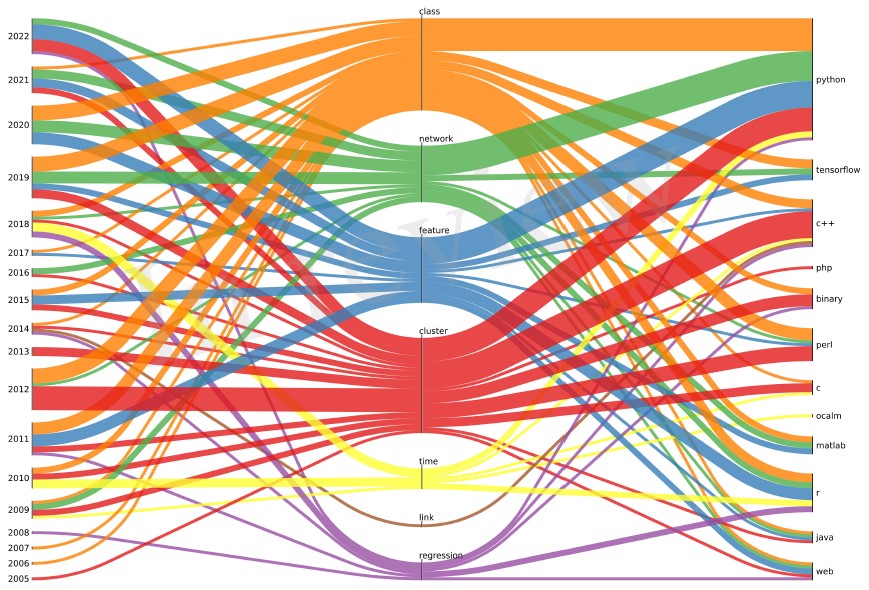 A toolbox of machine learning software to support microbiome analysisLaura Judith Marcos Zambrano, Víctor Manuel López Molina, Burcu Bakir-Gungor*, Marcus Frohme*, Kanita Karaduzovic-Hadziabdic*, Thomas Klammsteiner*, Eliana Ibrahimi*, Leo Lahti*, Tatjana Loncar-Turukalo*, Xhilda Dhamo*, Andrea Simeon*, Alina Nechyporenko*, Gianvito Pio*, Piotr Przymus*, Alexia Sampri*, Vladimir Tihomir Trajkovik*, Oliver Aasmets, Ricardo Araujo, Ioannis Anagnostopoulos, Onder Aydemir, Magali Berland, María de la Luz Calle, Michelangelo Ceci, Hatice Duman, Aycan Gundogdu, Aki S. Havulinna, Kardokh Hama Najib Kaka Bra, Eglantina Kalluci, Sercan Karav, Daniel Lode, Marta B. Lopes, Patrick May, Bram Nap, Miroslava Nedyalkova, Inês Paciência, Lejla Pasic, Meritxell Pujolassos, Rajesh Shigdel, Antonio Susin, Ines Thiele, Ciprian-Octavian Truică, Paul Wilmes, Ercüment Yılmaz, Malik Yousef, Marcus Joakim Claesson, Jaak Truu, and Enrique Carrillo De Santa PauFrontiers in Microbiology, Nov 2023
A toolbox of machine learning software to support microbiome analysisLaura Judith Marcos Zambrano, Víctor Manuel López Molina, Burcu Bakir-Gungor*, Marcus Frohme*, Kanita Karaduzovic-Hadziabdic*, Thomas Klammsteiner*, Eliana Ibrahimi*, Leo Lahti*, Tatjana Loncar-Turukalo*, Xhilda Dhamo*, Andrea Simeon*, Alina Nechyporenko*, Gianvito Pio*, Piotr Przymus*, Alexia Sampri*, Vladimir Tihomir Trajkovik*, Oliver Aasmets, Ricardo Araujo, Ioannis Anagnostopoulos, Onder Aydemir, Magali Berland, María de la Luz Calle, Michelangelo Ceci, Hatice Duman, Aycan Gundogdu, Aki S. Havulinna, Kardokh Hama Najib Kaka Bra, Eglantina Kalluci, Sercan Karav, Daniel Lode, Marta B. Lopes, Patrick May, Bram Nap, Miroslava Nedyalkova, Inês Paciência, Lejla Pasic, Meritxell Pujolassos, Rajesh Shigdel, Antonio Susin, Ines Thiele, Ciprian-Octavian Truică, Paul Wilmes, Ercüment Yılmaz, Malik Yousef, Marcus Joakim Claesson, Jaak Truu, and Enrique Carrillo De Santa PauFrontiers in Microbiology, Nov 2023The human microbiome has become an area of intense research due to its potential impact on human health. However, the analysis and interpretation of this data have proven to be challenging due to its complexity and high dimensionality. Machine learning (ML) algorithms can process vast amounts of data to uncover informative patterns and relationships within the data, even with limited prior knowledge. Therefore, there has been a rapid growth in the development of software specifically designed for the analysis and interpretation of microbiome data using ML techniques. These software incorporate a wide range of ML algorithms for clustering, classification, regression, or feature selection, to identify microbial patterns and relationships within the data and generate predictive models. This rapid development with a constant need for new developments and integration of new features require efforts into compile, catalog and classify these tools to create infrastructures and services with easy, transparent, and trustable standards. Here we review the state-of-the-art for ML tools applied in human microbiome studies, performed as part of the COST Action ML4Microbiome activities. This scoping review focuses on ML based software and framework resources currently available for the analysis of microbiome data in humans. The aim is to support microbiologists and biomedical scientists to go deeper into specialized resources that integrate ML techniques and facilitate future benchmarking to create standards for the analysis of microbiome data. The software resources are organized based on the type of analysis they were developed for and the ML techniques they implement. A description of each software with examples of usage is provided including comments about pitfalls and lacks in the usage of software based on ML methods in relation to microbiome data that need to be considered by developers and users. This review represents an extensive compilation to date, offering valuable insights and guidance for researchers interested in leveraging ML approaches for microbiome analysis.
@article{marcos_zambrano_toolbox_2023, title = {A toolbox of machine learning software to support microbiome analysis}, volume = {14}, copyright = {All rights reserved}, issn = {1664-302X}, url = {https://www.frontiersin.org/articles/10.3389/fmicb.2023.1250806}, doi = {10.3389/fmicb.2023.1250806}, language = {English}, urldate = {2023-11-12}, journal = {Frontiers in Microbiology}, author = {Marcos Zambrano, Laura Judith and López Molina, Víctor Manuel and Bakir-Gungor*, Burcu and Frohme*, Marcus and Karaduzovic-Hadziabdic*, Kanita and Klammsteiner*, Thomas and Ibrahimi*, Eliana and Lahti*, Leo and Loncar-Turukalo*, Tatjana and Dhamo*, Xhilda and Simeon*, Andrea and Nechyporenko*, Alina and Pio*, Gianvito and Przymus*, Piotr and Sampri*, Alexia and Trajkovik*, Vladimir Tihomir and Aasmets, Oliver and Araujo, Ricardo and Anagnostopoulos, Ioannis and Aydemir, Onder and Berland, Magali and Calle, María de la Luz and Ceci, Michelangelo and Duman, Hatice and Gundogdu, Aycan and Havulinna, Aki S. and Kaka Bra, Kardokh Hama Najib and Kalluci, Eglantina and Karav, Sercan and Lode, Daniel and Lopes, Marta B. and May, Patrick and Nap, Bram and Nedyalkova, Miroslava and Paciência, Inês and Pasic, Lejla and Pujolassos, Meritxell and Shigdel, Rajesh and Susin, Antonio and Thiele, Ines and Truică, Ciprian-Octavian and Wilmes, Paul and Yılmaz, Ercüment and Yousef, Malik and Claesson, Marcus Joakim and Truu, Jaak and Carrillo De Santa Pau, Enrique}, month = nov, year = {2023}, publisher = {Frontiers}, pages = {1250806}, dimensions = true, }
2022
-
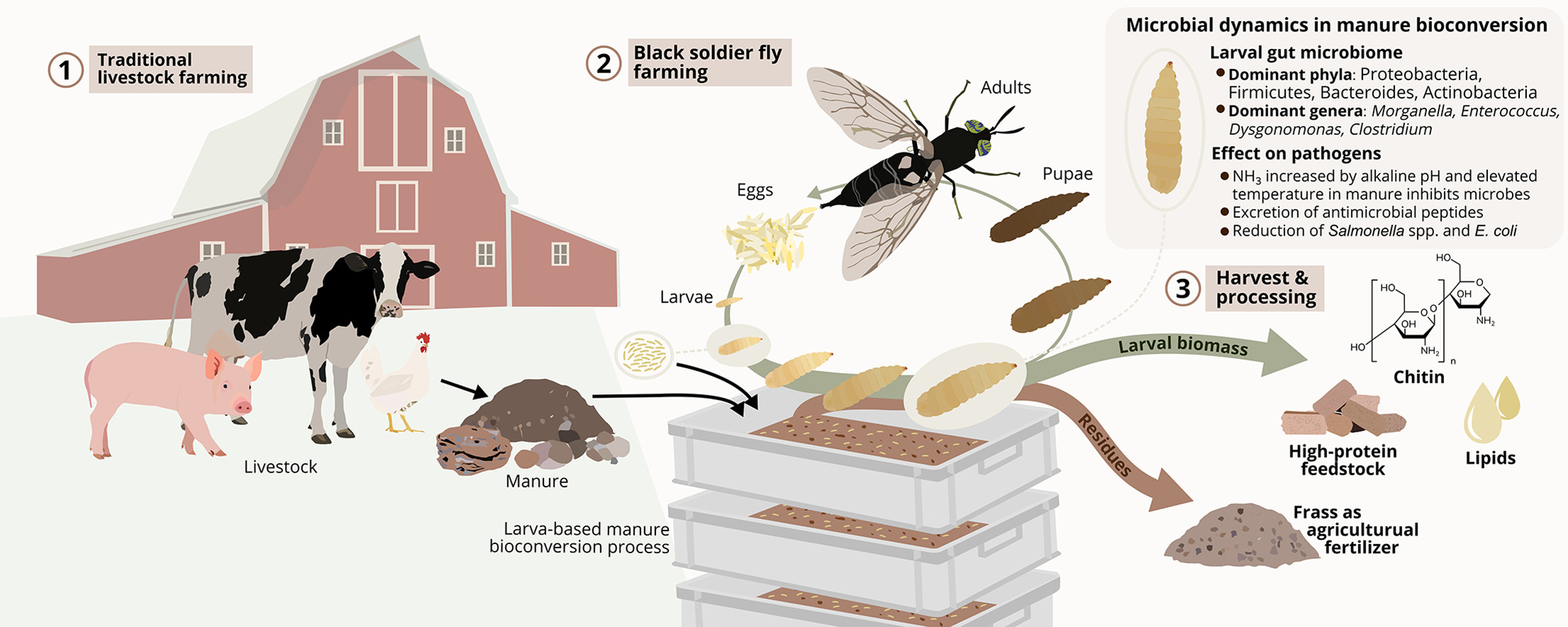 Black soldier fly larvae for organic manure recycling and its potential for a circular bioeconomy: A reviewTao Liu, Thomas Klammsteiner, Andrei Mikhailovich Dregulo, Vinay Kumar, Yuwen Zhou, Zengqiang Zhang, and Mukesh Kumar AwasthiScience of The Total Environment, Aug 2022
Black soldier fly larvae for organic manure recycling and its potential for a circular bioeconomy: A reviewTao Liu, Thomas Klammsteiner, Andrei Mikhailovich Dregulo, Vinay Kumar, Yuwen Zhou, Zengqiang Zhang, and Mukesh Kumar AwasthiScience of The Total Environment, Aug 2022Livestock farming and its products provide a diverse range of benefits for our day-to-day life. However, the ever-increasing demand for farmed animals has raised concerns about waste management and its impact on the environment. Worldwide, cattle produce enormous amounts of manure, which is detrimental to soil properties if poorly managed. Waste management with insect larvae is considered one of the most efficient techniques for resource recovery from manure. In recent years, the use of black soldier fly larvae (BSFL) for resource recovery has emerged as an effective method. Using BSFL has several advantages over traditional methods, as the larvae produce a safe compost and extract trace elements like Cu and Zn. This paper is a comprehensive review of the potential of BSFL for recycling organic wastes from livestock farming, manure bioconversion, parameters affecting the BSFL application on organic farming, and process performance of biomolecule degradation. The last part discusses the economic feasibility, lifecycle assessment, and circular bioeconomy of the BSFL in manure recycling. Moreover, it discusses the future perspectives associated with the application of BSFL. Specifically, this review discusses BSFL cultivation and its impact on the larvae’s physiology, gut biochemical physiology, gut microbes and metabolic pathways, nutrient conservation and global warming potential, microbial decomposition of organic nutrients, total and pathogenic microbial dynamics, and recycling of rearing residues as fertilizer.
@article{liu_manure_2022, title = {Black soldier fly larvae for organic manure recycling and its potential for a circular bioeconomy: A review}, volume = {833}, copyright = {All rights reserved}, issn = {0048-9697}, url = {https://www.sciencedirect.com/science/article/pii/S004896972202215X}, doi = {10.1016/j.scitotenv.2022.155122}, language = {en}, urldate = {2022-04-26}, journal = {Science of The Total Environment}, author = {Liu, Tao and Klammsteiner, Thomas and Dregulo, Andrei Mikhailovich and Kumar, Vinay and Zhou, Yuwen and Zhang, Zengqiang and Awasthi, Mukesh Kumar}, month = aug, year = {2022}, publisher = {Elsevier}, keywords = {Feed and food, Insect frass, Metabolic pathways, Microbiome, Pathogen reduction, Resource recovery}, pages = {155122}, dimensions = true, } -
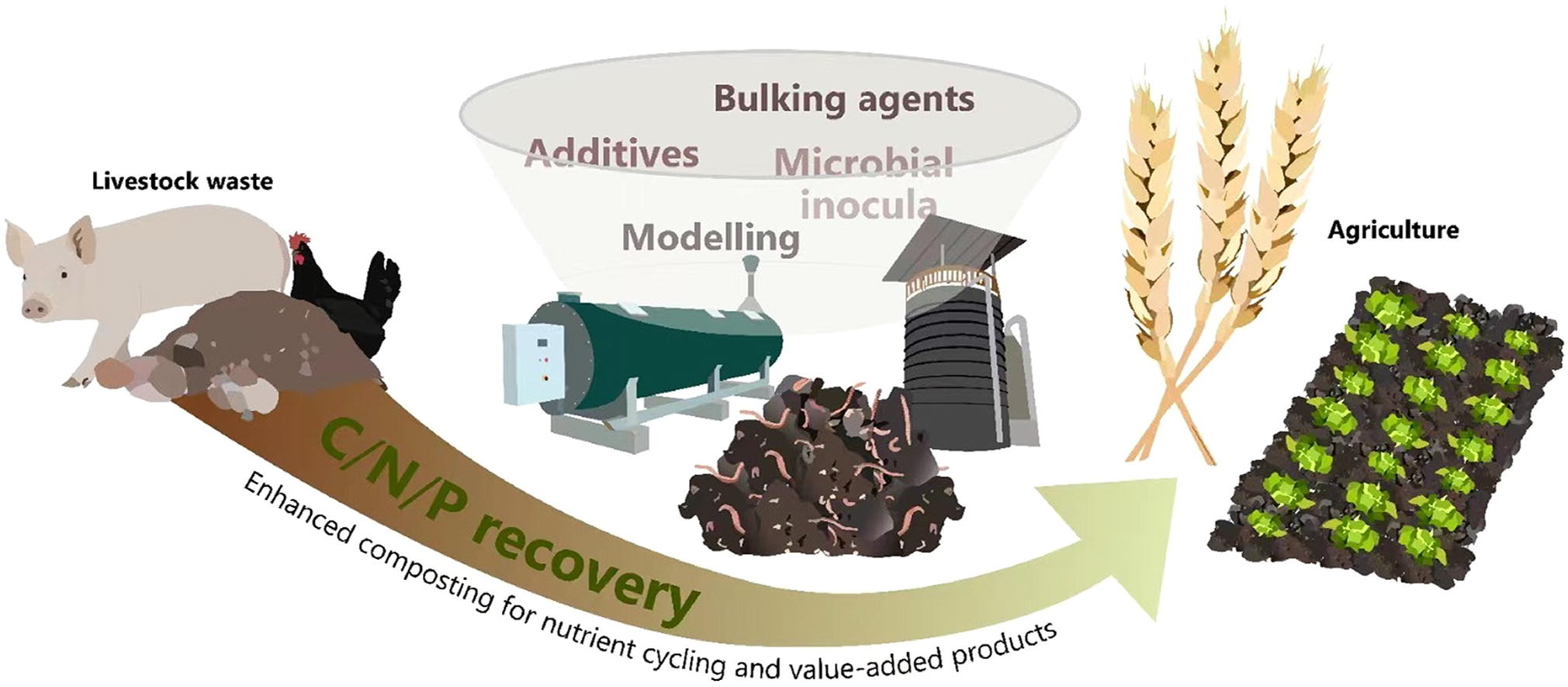 Recent trends and advances in composting and vermicomposting technologies: A reviewYuwen Zhou, Ran Xiao, Thomas Klammsteiner, Xiaoliang Kong, Binghua Yan, Florin-Constantin Mihai, Tao Liu, Zengqiang Zhang, and Mukesh Kumar AwasthiBioresource Technology, Sep 2022
Recent trends and advances in composting and vermicomposting technologies: A reviewYuwen Zhou, Ran Xiao, Thomas Klammsteiner, Xiaoliang Kong, Binghua Yan, Florin-Constantin Mihai, Tao Liu, Zengqiang Zhang, and Mukesh Kumar AwasthiBioresource Technology, Sep 2022Composting technologies have come a long way, developing from static heaps and windrow composting to smart, artificial intelligence-assisted reactor composting. While in previous years, much attention has been paid to identifying ideal organic waste streams and suitable co-composting candidates, more recent efforts tried to determine novel process-enhancing supplements. These include various single and mixed microbial cultures, additives, bulking agents, or combinations thereof. However, there is still ample need to fine-tune the composting process in order to reduce its impact on the environment and streamline it with circular economy goals. In this review, we highlight recent advances in integrating mathematical modelling, novel supplements, and reactor designs with (vermi-) composting practices and provide an outlook for future developments. These results should serve as reference point to target adjusting screws for process improvement and provide a guideline for waste management officials and stakeholders.
@article{zhou_composting_2022, title = {Recent trends and advances in composting and vermicomposting technologies: A review}, volume = {360}, copyright = {All rights reserved}, issn = {0960-8524}, shorttitle = {Recent trends and advances in composting and vermicomposting technologies}, url = {https://www.sciencedirect.com/science/article/pii/S0960852422009208}, doi = {10.1016/j.biortech.2022.127591}, language = {en}, urldate = {2022-07-11}, journal = {Bioresource Technology}, author = {Zhou, Yuwen and Xiao, Ran and Klammsteiner, Thomas and Kong, Xiaoliang and Yan, Binghua and Mihai, Florin-Constantin and Liu, Tao and Zhang, Zengqiang and Kumar Awasthi, Mukesh}, month = sep, year = {2022}, publisher = {Elsevier}, keywords = {Composting, Organic waste management, Gaseous emissions, Mathematical modelling, Thermophilic stage}, pages = {127591}, dimensions = true, } -
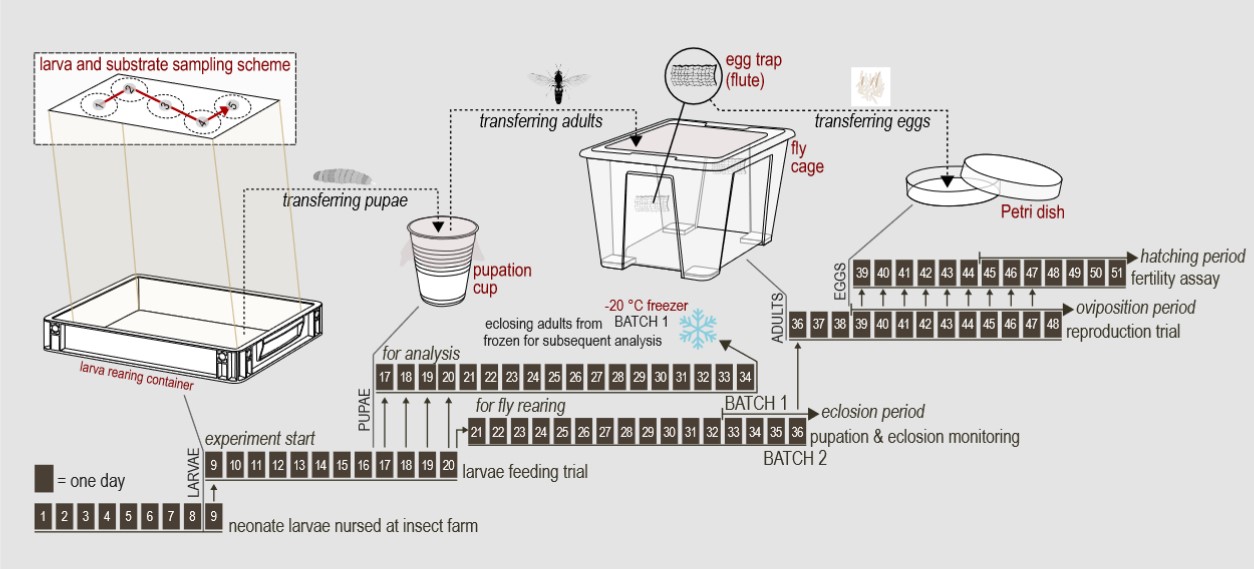 Life-history traits of black soldier fly reared on agro-industrial by-products subjected to three pre-treatments: a pilot-scale studyCarina D. Heussler, Heribert Insam, Andreas Walter, Birgit C. Schlick-Steiner*, Florian M. Steiner*, and Thomas Klammsteiner*Journal of Insects as Food and Feed, Dec 2022
Life-history traits of black soldier fly reared on agro-industrial by-products subjected to three pre-treatments: a pilot-scale studyCarina D. Heussler, Heribert Insam, Andreas Walter, Birgit C. Schlick-Steiner*, Florian M. Steiner*, and Thomas Klammsteiner*Journal of Insects as Food and Feed, Dec 2022Agrarian production generates approximately 190 million tons of agro-industrial by-products (AIBP) per year that are often disposed of without proper treatment, causing health hazards and environmental pollution. The black soldier fly (BSF; Hermetia illucens) has gained popularity as an organic waste recycler owing to its suitability for large-scale insect farming. Despite their valuable components, AIBPs are rich in fibres with low digestibility and provide a breeding ground for potentially pathogenic microbes, which necessitates proper caretaking. This study focuses on a pilot-scale life-cycle analysis of BSF, comparing three different pre-treatments for agro-industrial wastes. We assessed the effect of the pre-treatments on larval and pupal biomass yield and development time of life stages, pupal and adult body properties, adult emergence and sex ratio, and oviposition and fertilization rates. A mix of residues from pasta production and wheat bran (basis substrate, BS; control treatment) was pre-treated using a chemical (with 0.15% potassium sorbate, BSSORB), an organic (with 10% biochar, BSCHAR), and a microbiological (with a 10-day lactic acid fermentation, BSFERM) approach. We report that the BSSORB treatment had the significantly highest larval and pupal biomass yield as well the significantly largest pupae and adults, and the most successful adult emergence but had low oviposition success. BS and BSFERM were similar in terms of larval and pupal biomass yield, BSF development time, pupal and adult body properties, adult emergence, and oviposition. Nonetheless, BSFERM had the highest share of unfertilized eggs. With BSCHAR, BSF developed faster. This study indicates that all treatments have advantages and disadvantages and that thus their application should be selected based on breeding strategy. By analysing and adapting methods that facilitate the conversion of AIBPs to BSF biomass, the treatment of agricultural wastes and by-products can be made more efficient and sustainable.
@article{heussler_life-history_2022, title = {Life-history traits of black soldier fly reared on agro-industrial by-products subjected to three pre-treatments: a pilot-scale study}, volume = {9}, copyright = {All rights reserved}, shorttitle = {Life-history traits of black soldier fly reared on agro-industrial by-products subjected to three pre-treatments}, url = {https://www.wageningenacademic.com/doi/abs/10.3920/JIFF2022.0044}, doi = {10.3920/JIFF2022.0044}, number = {5}, urldate = {2022-12-03}, journal = {Journal of Insects as Food and Feed}, author = {Heussler, Carina D. and Insam, Heribert and Walter, Andreas and Schlick-Steiner*, Birgit C. and Steiner*, Florian M. and Klammsteiner*, Thomas}, month = dec, year = {2022}, publisher = {Wageningen Academic Publishers}, keywords = {<i>Hermetia illucens</i>, circular economy, waste valorisation, insect farming, sustainable agriculture, fertilizer}, pages = {545--556}, dimensions = true, } -
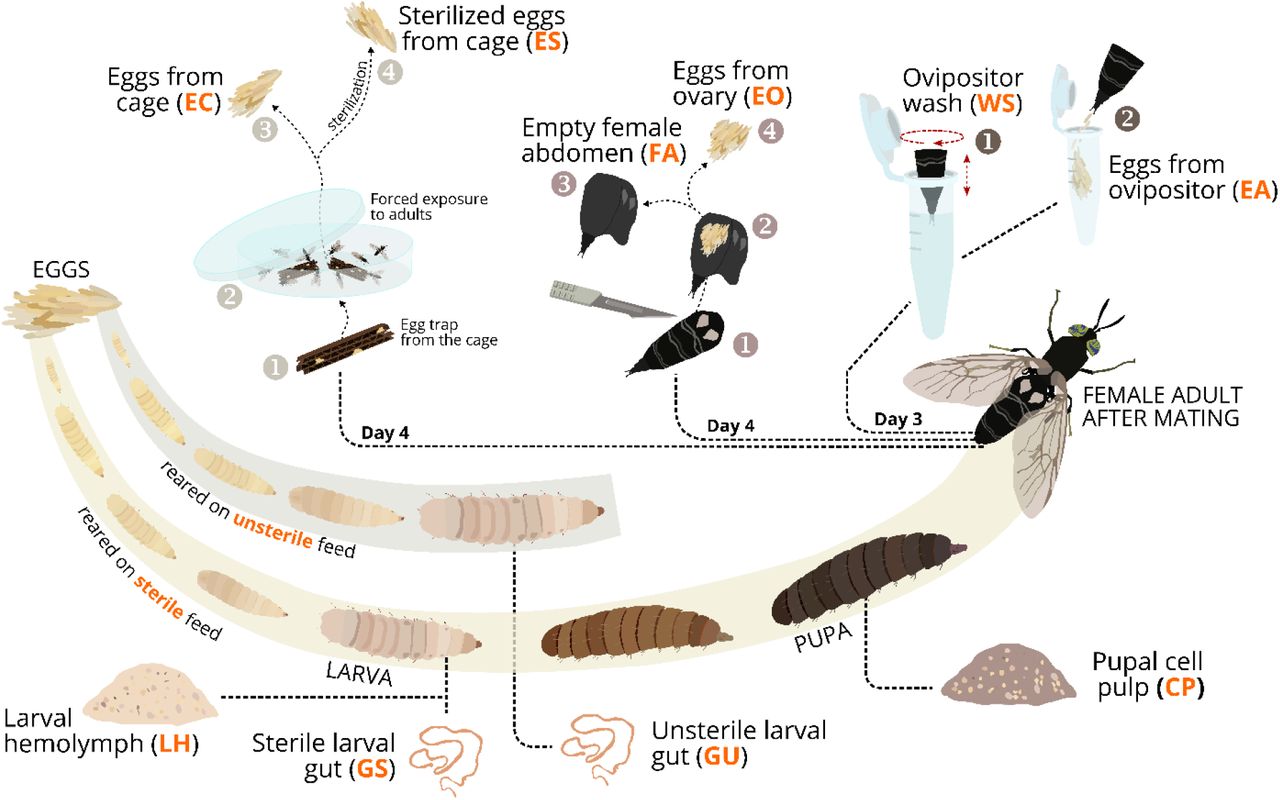 Decrypting the microbiota on the black soldier fly’s (Hermetia illucens L., Diptera: Stratiomyidae) egg surface and their origin during developmentCarina D. Heussler*, Thomas Klammsteiner*, Katharina T. Stonig, Heribert Insam, Birgit C. Schlick-Steiner, and Florian M. SteinerDec 2022
Decrypting the microbiota on the black soldier fly’s (Hermetia illucens L., Diptera: Stratiomyidae) egg surface and their origin during developmentCarina D. Heussler*, Thomas Klammsteiner*, Katharina T. Stonig, Heribert Insam, Birgit C. Schlick-Steiner, and Florian M. SteinerDec 2022The increasing global population leads to a soaring demand for protein for food and feed, and also challenges in organic waste management are growing. All this leads to environmental stress, causing biodiversity loss and an increase in greenhouse gas emissions. Alternative and sustainable animal protein sources are needed to reduce the negative environmental impact of food production. In the last years, the black soldier fly (BSF) has been proposed to substitute animal protein, since BSF may consume and reduce a variety of waste organic matter. Successful industrial rearing of BSF depends on a flourishing reproduction of adults, which is influenced not only by environmental but also by physiological factors. The BSF female oviposits single eggs into clutches close to decomposing organic matter and conspecific eggs. Studies have shown that microbes play a significant role in the oviposition of BSF eggs. In this study, we focus on the surface microbiota of the egg and its origin. We investigated if the microbiota is inoculated before, during, or actively after oviposition. For this purpose, we analysed the microbiota in the larval haemolymph and the gut of larvae raised on sterilized and non-sterilized feed, the pupal cell pulp, the wash of the egg-laying apparatus and the eggs directly collected after oviposition, the ovarian eggs and the empty female abdomen, the eggs with contact to adult BSF, and sterilized eggs. The bacterial communities were identified through 16S rRNA gene sequencing to assess the stage in BSF development during which the microbial colonization of the egg surface occurs. We demonstrated that bacteria differ among life stages resulting in a shift during BSF development from dominance of Enterobacteriaceae during the larval stage to dominance of Burkholderiaceae spp. in all analysed eggs. A predominant microbiota is present before oviposition and persists through all life stages, however, the overall population’s structure successively shifts during development. A better understanding of egg surface microbiota and oviposition attractants could significantly increase egg production and facilitate the mass harvesting of BSF larvae.
@article{heussler_decrypting_2022, type = {preprint}, title = {Decrypting the microbiota on the black soldier fly’s (<i>Hermetia illucens</i> L., Diptera: Stratiomyidae) egg surface and their origin during development}, copyright = {© 2022, Posted by Cold Spring Harbor Laboratory. This pre-print is available under a Creative Commons License (Attribution-NonCommercial-NoDerivs 4.0 International), CC BY-NC-ND 4.0, as described at http://creativecommons.org/licenses/by-nc-nd/4.0/}, shorttitle = {Decrypting the microbiota on the black soldier fly’s (<i>Hermetia illucens</i> L., Diptera}, url = {https://www.biorxiv.org/content/10.1101/2022.12.22.520758v1}, doi = {10.1101/2022.12.22.520758}, language = {en}, urldate = {2023-04-04}, publisher = {bioRxiv}, author = {Heussler*, Carina D. and Klammsteiner*, Thomas and Stonig, Katharina T. and Insam, Heribert and Schlick-Steiner, Birgit C. and Steiner, Florian M.}, month = dec, year = {2022}, dimensions = true, }
2021
-
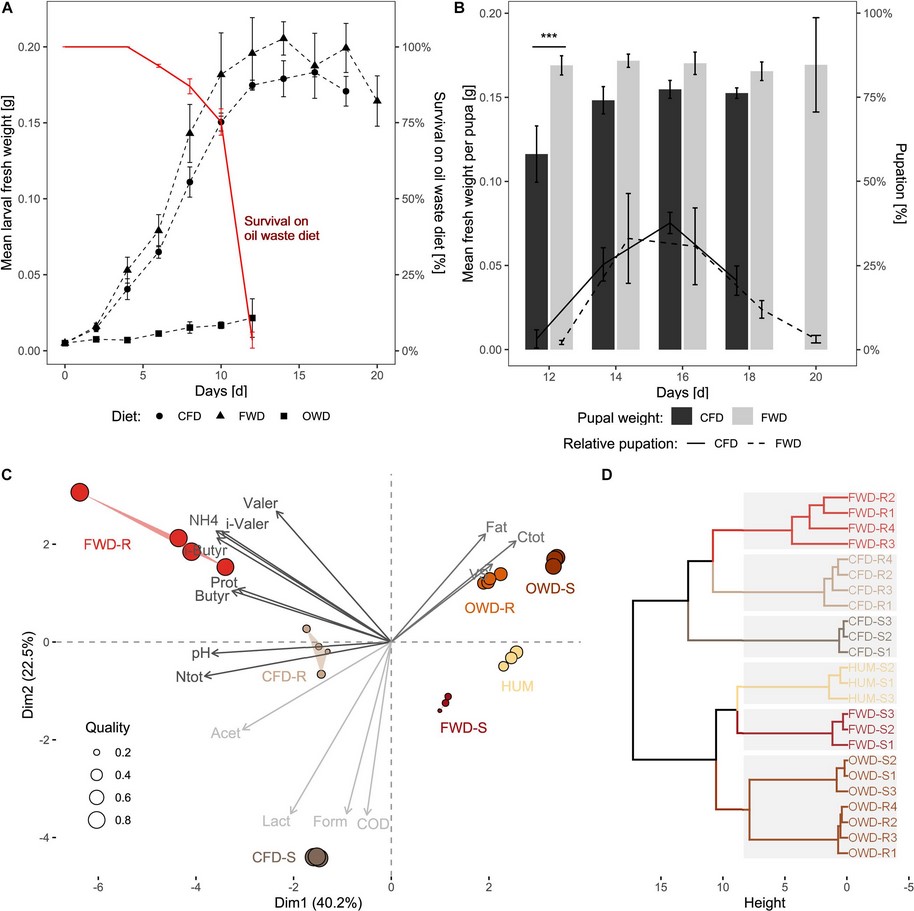 Impact of processed food (canteen and oil wastes) on the development of black soldier fly (Hermetia illucens) larvae and their gut microbiome functionsThomas Klammsteiner, Andreas Walter, Tajda Bogataj, Carina D. Heussler, Blaž Stres, Florian M. Steiner, Birgit C. Schlick-Steiner, and Heribert InsamFrontiers in Microbiology, Jan 2021
Impact of processed food (canteen and oil wastes) on the development of black soldier fly (Hermetia illucens) larvae and their gut microbiome functionsThomas Klammsteiner, Andreas Walter, Tajda Bogataj, Carina D. Heussler, Blaž Stres, Florian M. Steiner, Birgit C. Schlick-Steiner, and Heribert InsamFrontiers in Microbiology, Jan 2021Canteens represent an essential food supply hub for educational institutions, companies, and business parks. Many people in these locations rely on a guaranteed service with consistent quality. It is an ongoing challenge to satisfy the demand for sufficient serving numbers, portion sizes, and menu variations to cover food intolerances and different palates of customers. However, overestimating this demand or fluctuating quality of dishes leads to an inevitable loss of unconsumed food due to leftovers. In this study, the food waste fraction of canteen leftovers was identified as an optimal diet for black soldier fly (Hermetia illucens) larvae based on 50% higher consumption and 15% higher waste reduction indices compared with control chicken feed diet. Although the digestibility of food waste was nearly twice as high, the conversion efficiency of ingested and digested chicken feed remains unparalleled (17.9 ± 0.6 and 37.5 ± 0.9 in CFD and 7.9 ± 0.9 and 9.6 ± 1.0 in FWD, respectively). The oil separator waste fraction, however, inhibited biomass gain by at least 85% and ultimately led to a larval mortality of up to 96%. In addition to monitoring larval development, we characterized physicochemical properties of pre- and post-process food waste substrates. High-throughput amplicon sequencing identified Firmicutes, Proteobacteria, and Bacteroidota as the most abundant phyla, and Morganella sp., Acinetobacter sp., and certain Lactobacillales species were identified as indicator species. By using metagenome imputation, we additionally gained insights into the functional spectrum of gut microbial communities. We anticipate that the results will contribute to the development of decentralized waste-management sites that make use of larvae to process food waste as it has become common practice for biogas plants.
@article{klammsteiner_impact_2021, title = {Impact of processed food (canteen and oil wastes) on the development of black soldier fly (<i>Hermetia illucens</i>) larvae and their gut microbiome functions}, volume = {12}, copyright = {All rights reserved}, issn = {1664-302X}, url = {https://www.frontiersin.org/articles/10.3389/fmicb.2021.619112/full}, doi = {10.3389/fmicb.2021.619112}, language = {English}, urldate = {2021-02-04}, journal = {Frontiers in Microbiology}, author = {Klammsteiner, Thomas and Walter, Andreas and Bogataj, Tajda and Heussler, Carina D. and Stres, Blaž and Steiner, Florian M. and Schlick-Steiner, Birgit C. and Insam, Heribert}, month = jan, year = {2021}, publisher = {Frontiers}, keywords = {16S amplicon sequencing, Animal feedstuff, Circular economy, Growth parameters, Metabolism, microbial communities, Oil waste, Waste valorization}, pages = {619112}, dimensions = true, } -
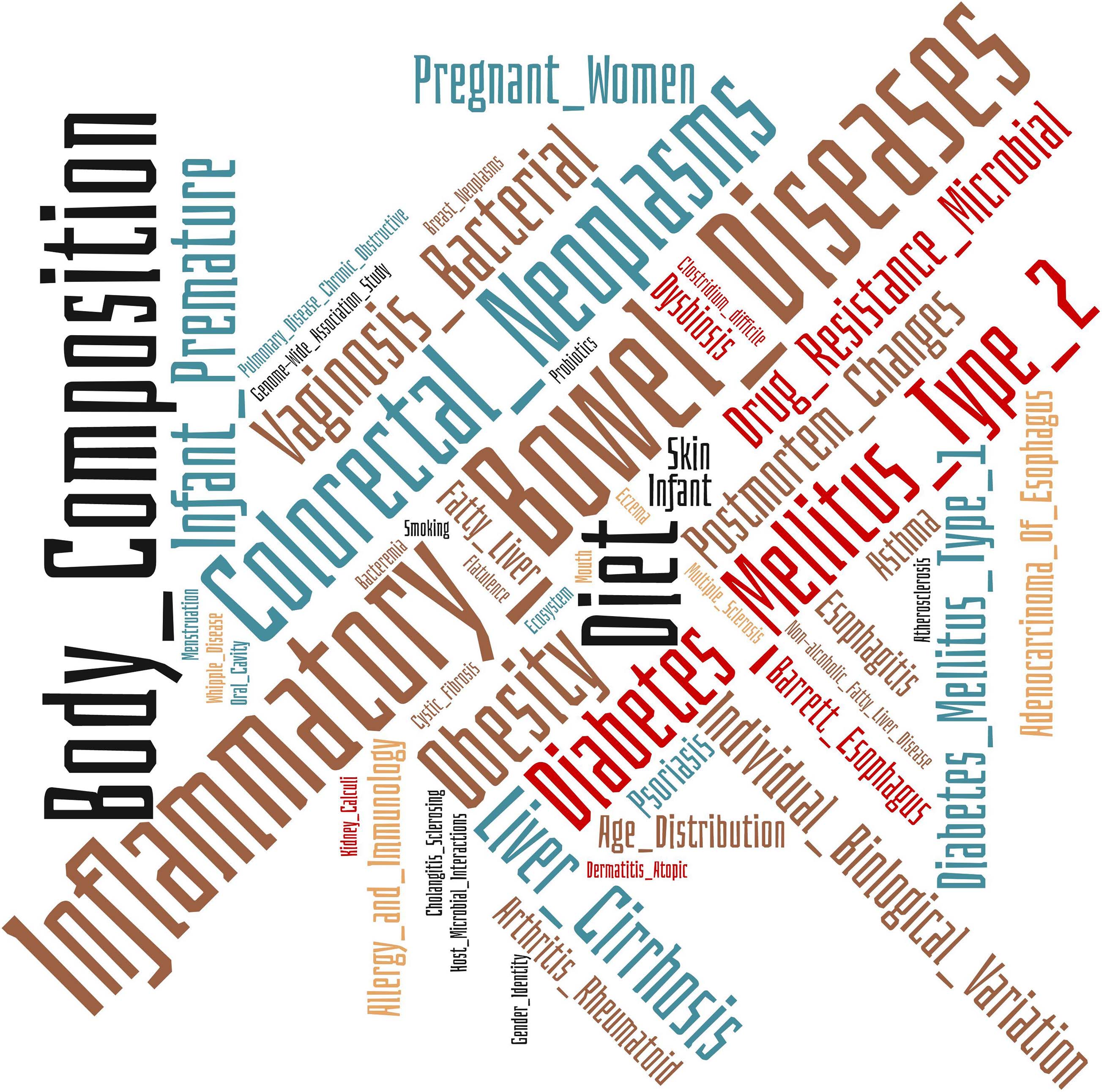 Applications of machine learning in human microbiome studies: a review on feature selection, biomarker identification, disease prediction and treatmentLaura Judith Marcos Zambrano, Kanita Karaduzovic-Hadziabdic, Tatjana Loncar-Turukalo, Piotr Przymus, Vladimir Trajkovik, Oliver Aasmets, Magali Berland, Aleksandra Gruca, Jasminka Hasic Telalovic, Hron Karel, Thomas Klammsteiner, Mikhail Kolev, Leo Lahti, Mart B. Lopes, Victor Moreno, Irina Naskinova, Elin Org, Inês Paciência, Georgios Papoutsoglou, Rajesh Shigdel, Blaz Stres, Baiba Vilne, Malik Yousef, Eftim Zdravevski, Ioannis Tsamardinos, Enrique Carrillo Santa Pau, Marcus Claesson, Isabel Moreno Indias, and Jaak TruuFrontiers in Microbiology, Feb 2021
Applications of machine learning in human microbiome studies: a review on feature selection, biomarker identification, disease prediction and treatmentLaura Judith Marcos Zambrano, Kanita Karaduzovic-Hadziabdic, Tatjana Loncar-Turukalo, Piotr Przymus, Vladimir Trajkovik, Oliver Aasmets, Magali Berland, Aleksandra Gruca, Jasminka Hasic Telalovic, Hron Karel, Thomas Klammsteiner, Mikhail Kolev, Leo Lahti, Mart B. Lopes, Victor Moreno, Irina Naskinova, Elin Org, Inês Paciência, Georgios Papoutsoglou, Rajesh Shigdel, Blaz Stres, Baiba Vilne, Malik Yousef, Eftim Zdravevski, Ioannis Tsamardinos, Enrique Carrillo Santa Pau, Marcus Claesson, Isabel Moreno Indias, and Jaak TruuFrontiers in Microbiology, Feb 2021The number of microbiome-related studies has notably increased the availability of data on human microbiome composition and function. These studies provide the essential material to deeply explore host-microbiome associations and their relation to the development and progression of various complex diseases. Improved data-analytical tools are needed to exploit all information from these biological datasets, taking into account the peculiarities of microbiome data, i.e. compositional, heterogeneous and sparse nature of these datasets. The possibility of predicting host-phenotypes based on taxonomy-informed feature selection to establish an association between microbiome and predict disease states is beneficial for personalized medicine. In this regard, machine learning (ML) provides new insights into the development of models that can be used to predict outputs, such as classification and prediction in microbiology, infer host phenotypes to predict diseases and use microbial communities to stratify patients by their characterization of state-specific microbial signatures. Here we review the state-of-the-art ML methods and respective software applied in human microbiome studies, performed as part of the COST Action ML4Microbiome activities. This scoping review focuses on the application of ML in microbiome studies related to association and clinical use for diagnostics, prognostics, and therapeutics. Although the data presented here is more related to the bacterial community, many algorithms could be applied in general, regardless of the feature type. This literature and software review covering this broad topic is aligned with the scoping review methodology. The manual identification of data sources has been complemented with: (1) automated publication search through digital libraries of the three major publishers using natural language processing (NLP) Toolkit, and (2) an automated identification of relevant software repositories on GitHub and ranking of the related research papers relying on learning to rank approach.
@article{zambrano_applications_2021, title = {Applications of machine learning in human microbiome studies: a review on feature selection, biomarker identification, disease prediction and treatment}, volume = {12}, copyright = {All rights reserved}, issn = {1664-302X}, shorttitle = {Applications of machine learning in human microbiome studies}, url = {https://www.frontiersin.org/articles/10.3389/fmicb.2021.634511/abstract}, doi = {10.3389/fmicb.2021.634511}, language = {English}, urldate = {2021-02-17}, journal = {Frontiers in Microbiology}, author = {Zambrano, Laura Judith Marcos and Karaduzovic-Hadziabdic, Kanita and Loncar-Turukalo, Tatjana and Przymus, Piotr and Trajkovik, Vladimir and Aasmets, Oliver and Berland, Magali and Gruca, Aleksandra and Hasic Telalovic, Jasminka and Karel, Hron and Klammsteiner, Thomas and Kolev, Mikhail and Lahti, Leo and Lopes, Mart B. and Moreno, Victor and Naskinova, Irina and Org, Elin and Paciência, Inês and Papoutsoglou, Georgios and Shigdel, Rajesh and Stres, Blaz and Vilne, Baiba and Yousef, Malik and Zdravevski, Eftim and Tsamardinos, Ioannis and de Santa Pau, Enrique Carrillo and Claesson, Marcus and Moreno Indias, Isabel and Truu, Jaak}, month = feb, year = {2021}, dimensions = {true}, publisher = {Frontiers}, keywords = {microbiome, biomarker identification, Disease Prediction, feature selection, machine learning}, pages = {634511}, } -
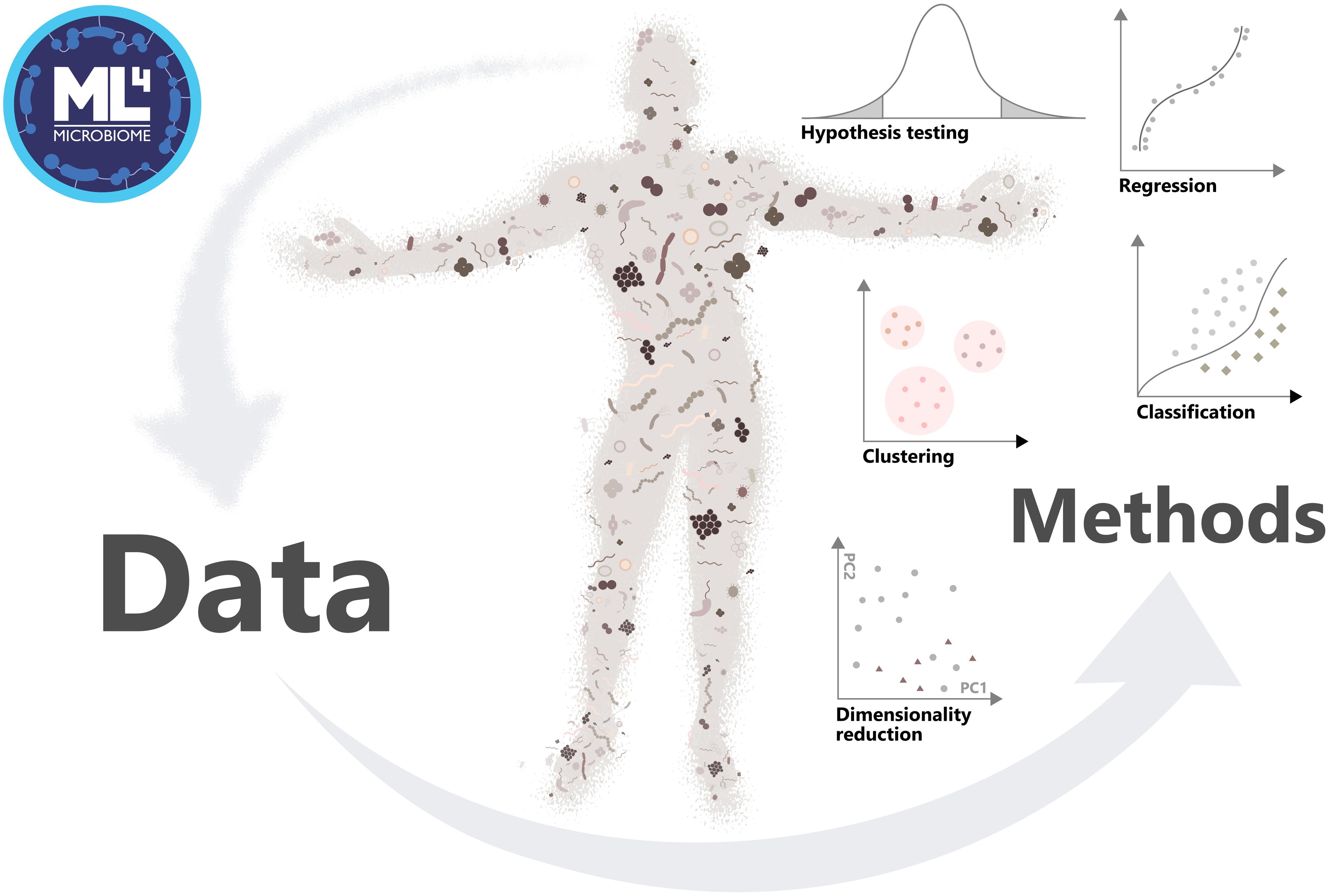 Statistical and machine learning techniques in human microbiome studies: contemporary challenges and solutionsIsabel Moreno-Indias, Leo Lahti, Miroslava Nedyalkova, Ilze Elbere, Gennady V. Roshchupkin, Muhamed Adilovic, Onder Aydemir, Burcu Bakir-Gungor, Enrique Carrillo-de Santa Pau, Domenica D’Elia, Magesh S. Desai, Laurent Falquet, Aycan Gundogdu, Karel Hron, Thomas Klammsteiner, Marta B. Lopes, Laura Judith Marcos Zambrano, Cláudia Marques, Michael Mason, Patrick May, Lejla Pašić, Gianvito Pio, Sándor Pongor, Vasilis J. Promponas, Piotr Przymus, Julio Sáez-Rodríguez, Alexia Sampri, Rajesh Shigdel, Blaz Stres, Ramona Suharoschi, Jaak Truu, Ciprian-Octavian Truică, Baiba Vilne, Dimitrios P. Vlachakis, Ercüment Yılmaz, Georg Zeller, Aldert Zomer, David Gómez-Cabrero, and Marcus ClaessonFrontiers in Microbiology, Feb 2021
Statistical and machine learning techniques in human microbiome studies: contemporary challenges and solutionsIsabel Moreno-Indias, Leo Lahti, Miroslava Nedyalkova, Ilze Elbere, Gennady V. Roshchupkin, Muhamed Adilovic, Onder Aydemir, Burcu Bakir-Gungor, Enrique Carrillo-de Santa Pau, Domenica D’Elia, Magesh S. Desai, Laurent Falquet, Aycan Gundogdu, Karel Hron, Thomas Klammsteiner, Marta B. Lopes, Laura Judith Marcos Zambrano, Cláudia Marques, Michael Mason, Patrick May, Lejla Pašić, Gianvito Pio, Sándor Pongor, Vasilis J. Promponas, Piotr Przymus, Julio Sáez-Rodríguez, Alexia Sampri, Rajesh Shigdel, Blaz Stres, Ramona Suharoschi, Jaak Truu, Ciprian-Octavian Truică, Baiba Vilne, Dimitrios P. Vlachakis, Ercüment Yılmaz, Georg Zeller, Aldert Zomer, David Gómez-Cabrero, and Marcus ClaessonFrontiers in Microbiology, Feb 2021Human microbiome has emerged as a central research topic in human biology and biomedicine. Current microbiome studies generate high-throughput omics data across different body sites, populations, and lifetime. Whereas many of the challenges in microbiome research are similar to other high-throughput studies, the quantitative analyses need to address the heterogeneity of data, specific statistical properties, and the remarkable variation in microbiome composition across individuals and body sites. This has led to a broad spectrum of statistical and machine learning challenges that range from study design, data processing, and standardization to analysis, modeling, cross-study comparison, prediction, data science ecosystems, and reproducible reporting. Nevertheless, although many statistics and machine learning approaches and tools have been developed, new techniques are needed to deal with emerging applications and the vast heterogeneity of microbiome data. We review and discuss emerging applications of statistical and machine learning techniques in human microbiome studies and introduce the COST Action CA18131 "ML4Microbiome" that brings together microbiome researchers and machine learning experts to address current challenges such as standardisation of analysis pipelines for reproducibility of data analysis results, benchmarking, improvement, or development of existing and new tools and ontologies.
@article{moreno-indias_statistical_2021, title = {Statistical and machine learning techniques in human microbiome studies: contemporary challenges and solutions}, volume = {12}, copyright = {All rights reserved}, issn = {1664-302X}, shorttitle = {Statistical and machine learning techniques in human microbiome studies}, url = {https://www.frontiersin.org/articles/10.3389/fmicb.2021.635781/abstract}, doi = {10.3389/fmicb.2021.635781}, language = {English}, urldate = {2021-02-18}, journal = {Frontiers in Microbiology}, author = {Moreno-Indias, Isabel and Lahti, Leo and Nedyalkova, Miroslava and Elbere, Ilze and Roshchupkin, Gennady V. and Adilovic, Muhamed and Aydemir, Onder and Bakir-Gungor, Burcu and Carrillo-de Santa Pau, Enrique and D'Elia, Domenica and Desai, Magesh S. and Falquet, Laurent and Gundogdu, Aycan and Hron, Karel and Klammsteiner, Thomas and Lopes, Marta B. and Marcos Zambrano, Laura Judith and Marques, Cláudia and Mason, Michael and May, Patrick and Pašić, Lejla and Pio, Gianvito and Pongor, Sándor and Promponas, Vasilis J. and Przymus, Piotr and Sáez-Rodríguez, Julio and Sampri, Alexia and Shigdel, Rajesh and Stres, Blaz and Suharoschi, Ramona and Truu, Jaak and Truică, Ciprian-Octavian and Vilne, Baiba and Vlachakis, Dimitrios P. and Yılmaz, Ercüment and Zeller, Georg and Zomer, Aldert and Gómez-Cabrero, David and Claesson, Marcus}, month = feb, year = {2021}, publisher = {Frontiers}, keywords = {microbiome, biomarker identification, machine learning, ML4microbiome, personalized medicine}, pages = {635781}, dimensions = true, }
2020
-
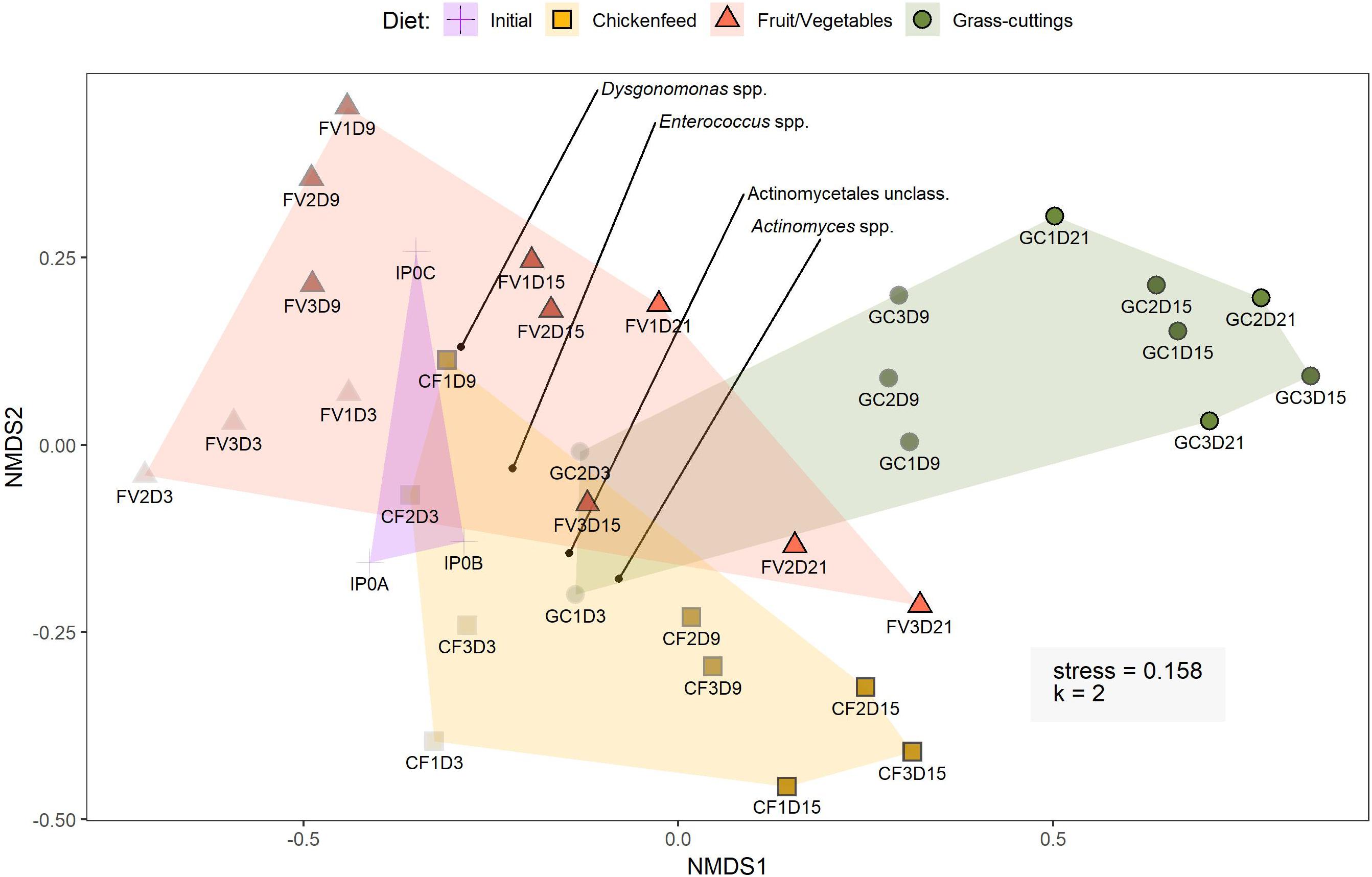 The core gut microbiome of black soldier fly (Hermetia illucens) larvae raised on low-bioburden dietsThomas Klammsteiner, Andreas Walter, Tajda Bogataj, Carina D. Heussler, Blaž Stres, Florian M. Steiner, Birgit C. Schlick-Steiner, Wolfgang Arthofer, and Heribert InsamFrontiers in Microbiology, May 2020
The core gut microbiome of black soldier fly (Hermetia illucens) larvae raised on low-bioburden dietsThomas Klammsteiner, Andreas Walter, Tajda Bogataj, Carina D. Heussler, Blaž Stres, Florian M. Steiner, Birgit C. Schlick-Steiner, Wolfgang Arthofer, and Heribert InsamFrontiers in Microbiology, May 2020An organism’s gut microbiome handles most of the metabolic processes associated with food intake and digestion but can also strongly affect health and behavior. A stable microbial core community in the gut provides general metabolic competences for substrate degradation and is robust against extrinsic disturbances like changing diets or pathogens. Black Soldier Fly larvae (BSFL; Hermetia illucens) are well known for their ability to efficiently degrade a wide spectrum of organic materials. The ingested substrates build up the high fat and protein content in their bodies that make the larvae interesting for the animal feedstuff industry. In this study, we subjected BSFL to three distinct types of diets carrying a low bioburden and assessed the diets’ impact on larval development and on the composition of the bacterial and archaeal gut community. No significant impact on the gut microbiome across treatments pointed us to the presence of a predominant core community backed by a diverse spectrum of low-abundance taxa. Actinomyces spp., Dysgonomonas spp., and Enterococcus spp. as main members of this community provide various functional and metabolic skills that could be crucial for the thriving of BSFL in various environments. This indicates that the type of diet could play a lesser role in guts of BSFL than previously assumed and that instead a stable autochthonous collection of bacteria provides the tools for degrading of a broad range of substrates. Characterizing the interplay between the core gut microbiome and BSFL helps to understand the involved degradation processes and could contribute to further improving large-scale BSFL rearing.
@article{klammsteiner_core_2020, title = {The core gut microbiome of black soldier fly (<i>Hermetia illucens</i>) larvae raised on low-bioburden diets}, volume = {11}, copyright = {Creative Commons Attribution-NonCommercial-NoDerivatives 4.0 International License (CC-BY-NC-ND)}, issn = {1664-302X}, url = {https://www.frontiersin.org/articles/10.3389/fmicb.2020.00993/full?&utm_source=Email_to_authors_&utm_medium=Email&utm_content=T1_11.5e1_author&utm_campaign=Email_publication&field=&journalName=Frontiers_in_Microbiology&id=499002}, doi = {10.3389/fmicb.2020.00993}, language = {English}, urldate = {2020-05-21}, journal = {Frontiers in Microbiology}, author = {Klammsteiner, Thomas and Walter, Andreas and Bogataj, Tajda and Heussler, Carina D. and Stres, Blaž and Steiner, Florian M. and Schlick-Steiner, Birgit C. and Arthofer, Wolfgang and Insam, Heribert}, month = may, year = {2020}, publisher = {Frontiers}, keywords = {16S amplicon sequencing, Animal feedstuff, Circular economy, microbial communities, Waste valorization, AGIV, Actinomyces, Larval metabolism}, pages = {993}, dimensions = true, } -
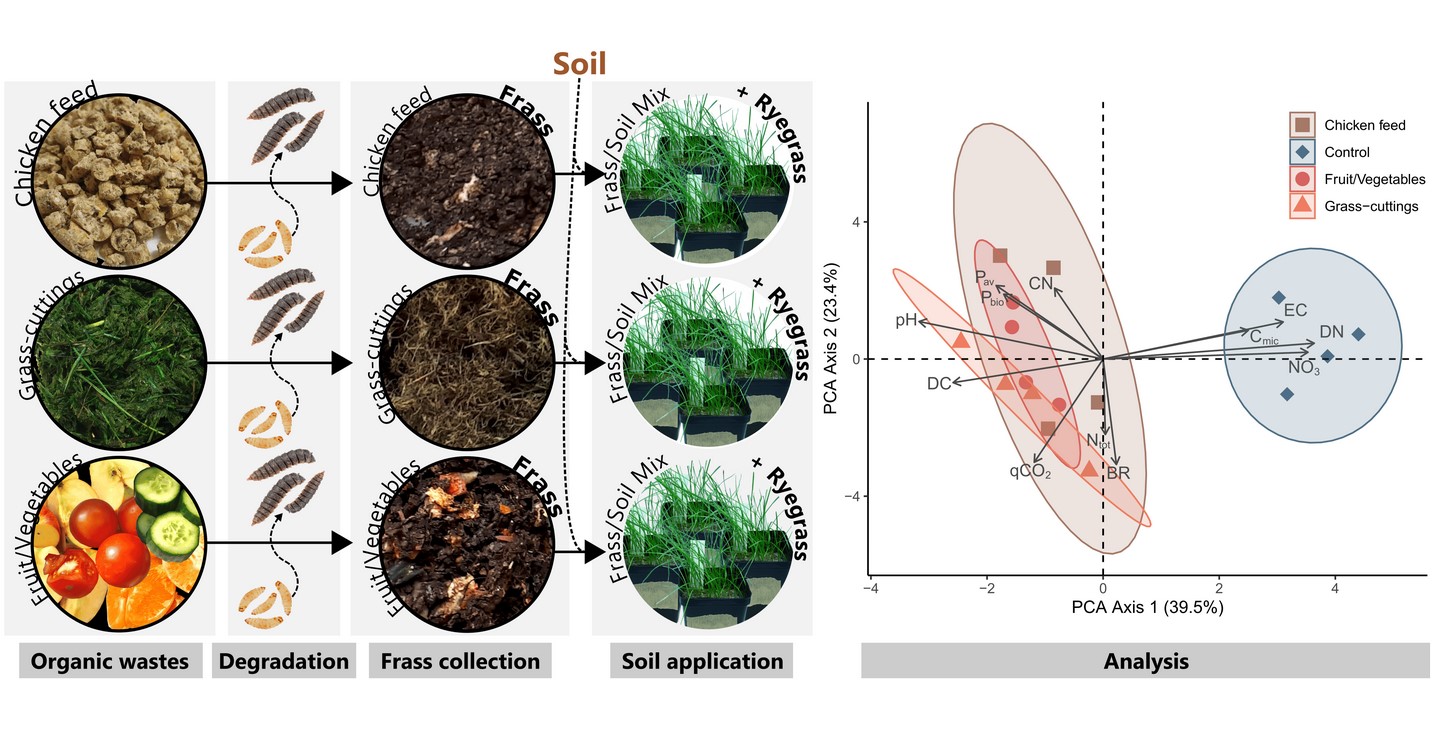 Suitability of black soldier fly frass as soil amendment and implication for organic waste hygienizationThomas Klammsteiner, Veysel Turan, Marina Fernández-Delgado Juárez, Simon Oberegger, and Heribert InsamAgronomy, Oct 2020
Suitability of black soldier fly frass as soil amendment and implication for organic waste hygienizationThomas Klammsteiner, Veysel Turan, Marina Fernández-Delgado Juárez, Simon Oberegger, and Heribert InsamAgronomy, Oct 2020Because of its nutritious properties, the black soldier fly has emerged as one of the most popular species in advancing circular economy through the re-valorization of anthropogenic organic wastes to insect biomass. Black soldier fly frass accumulates as a major by-product in artificial rearing set-ups and harbors great potential to complement or replace commercial fertilizers. We applied frass from larvae raised on different diets in nitrogen-equivalent amounts as soil amendment, comparing it to NH4NO3 fertilizer as a control. While the soil properties did not reveal any difference between mineral fertilizer and frass, principal component analysis showed significant differences that are mainly attributed to nitrate and dissolved nitrogen contents. We did not find significant differences in the growth of perennial ryegrass between the treatments, indicating that frass serves as a rapidly acting fertilizer comparable to NH4NO3. While the abundance of coliform bacteria increased during frass maturation, after application to the soil, they were outcompeted by gram-negatives. We thus conclude that frass may serve as a valuable fertilizer and does not impair the hygienic properties of soils.
@article{klammsteiner_suitability_2020, title = {Suitability of black soldier fly frass as soil amendment and implication for organic waste hygienization}, volume = {10}, copyright = {http://creativecommons.org/licenses/by/3.0/}, url = {https://www.mdpi.com/2073-4395/10/10/1578}, doi = {10.3390/agronomy10101578}, language = {en}, number = {10}, urldate = {2020-10-16}, journal = {Agronomy}, author = {Klammsteiner, Thomas and Turan, Veysel and Juárez, Marina Fernández-Delgado and Oberegger, Simon and Insam, Heribert}, month = oct, year = {2020}, publisher = {MDPI}, keywords = {circular economy, organic waste, animal feedstuff, fertilizer, greenhouse, insect larva}, pages = {1578}, dimensions = true, } -
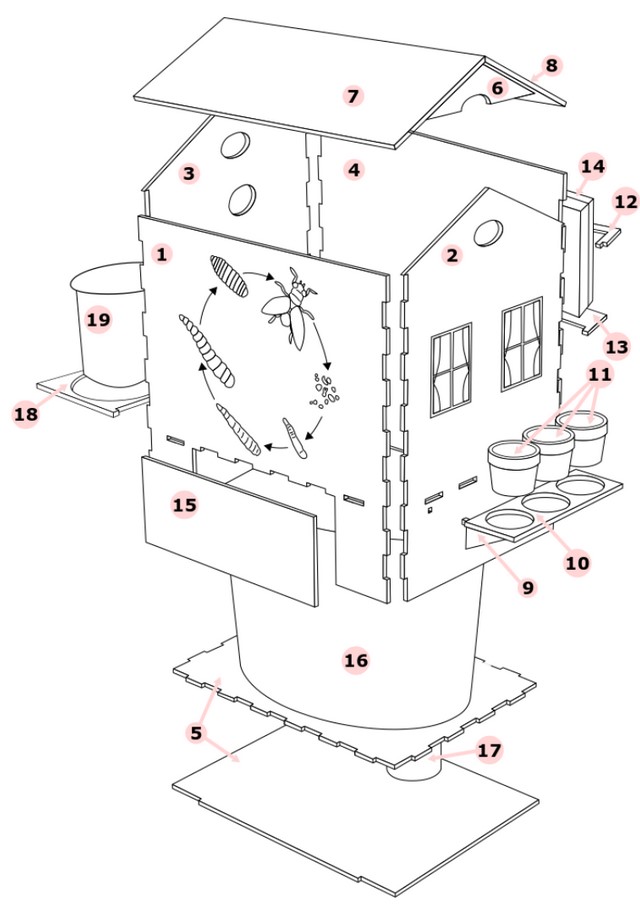 Black soldier fly school workshops as means to promote circular economy and environmental awarenessAndreas Walter*, Thomas Klammsteiner*, Magdalena Gassner, Carina Desirée Heussler, Suzanne Kapelari, Markus Schermer, and Heribert InsamSustainability, Jan 2020
Black soldier fly school workshops as means to promote circular economy and environmental awarenessAndreas Walter*, Thomas Klammsteiner*, Magdalena Gassner, Carina Desirée Heussler, Suzanne Kapelari, Markus Schermer, and Heribert InsamSustainability, Jan 2020Today, insect applications for food and feed are of strong economic, ecological and social interest. Despite their tremendous potential, insects still elicit negative associations in the mindset of Western consumers, which is attributed to a lack of knowledge and scarce opportunities for engagement in this topic. The citizen science project ‘six-legged livestock’ aims to increase the potential of the insect Hermetia illucens (black soldier fly), merging the topics ‘waste re-valorisation’ and ‘protein production’ as a cross-link to circular economy. Workshops were held in four school classes, involving 89 pupils, aged 15 to 18 years old. Making use of organic wastes, participating school classes ran eight rearing systems containing a total of 1800 H. illucens larvae. In the four-week experiments, the pupils monitored larval growth and development. Evidently, the pupils were highly motivated to run their rearing systems and fulfil their working tasks. Furthermore, negative associations with insects, including phobia and scepticism decreased, while excitement for the topic increased after hands-on work with the insects. The presented project may be considered an innovative approach paving the way for the establishment of insects as an important educational tool, since they are still underrepresented in scholarly curricula, despite the public outrage over insect decline.
@article{walter_workshops_2020, title = {Black soldier fly school workshops as means to promote circular economy and environmental awareness}, volume = {12}, copyright = {http://creativecommons.org/licenses/by/3.0/}, url = {https://www.mdpi.com/2071-1050/12/22/9574}, doi = {10.3390/su12229574}, language = {en}, number = {22}, urldate = {2020-11-20}, journal = {Sustainability}, author = {Walter*, Andreas and Klammsteiner*, Thomas and Gassner, Magdalena and Heussler, Carina Desirée and Kapelari, Suzanne and Schermer, Markus and Insam, Heribert}, month = jan, year = {2020}, publisher = {MDPI}, keywords = {<i>Hermetia illucens</i>, black soldier fly, citizen science, insect biotechnology, waste valorisation}, pages = {9574}, dimensions = true, }
2018
-
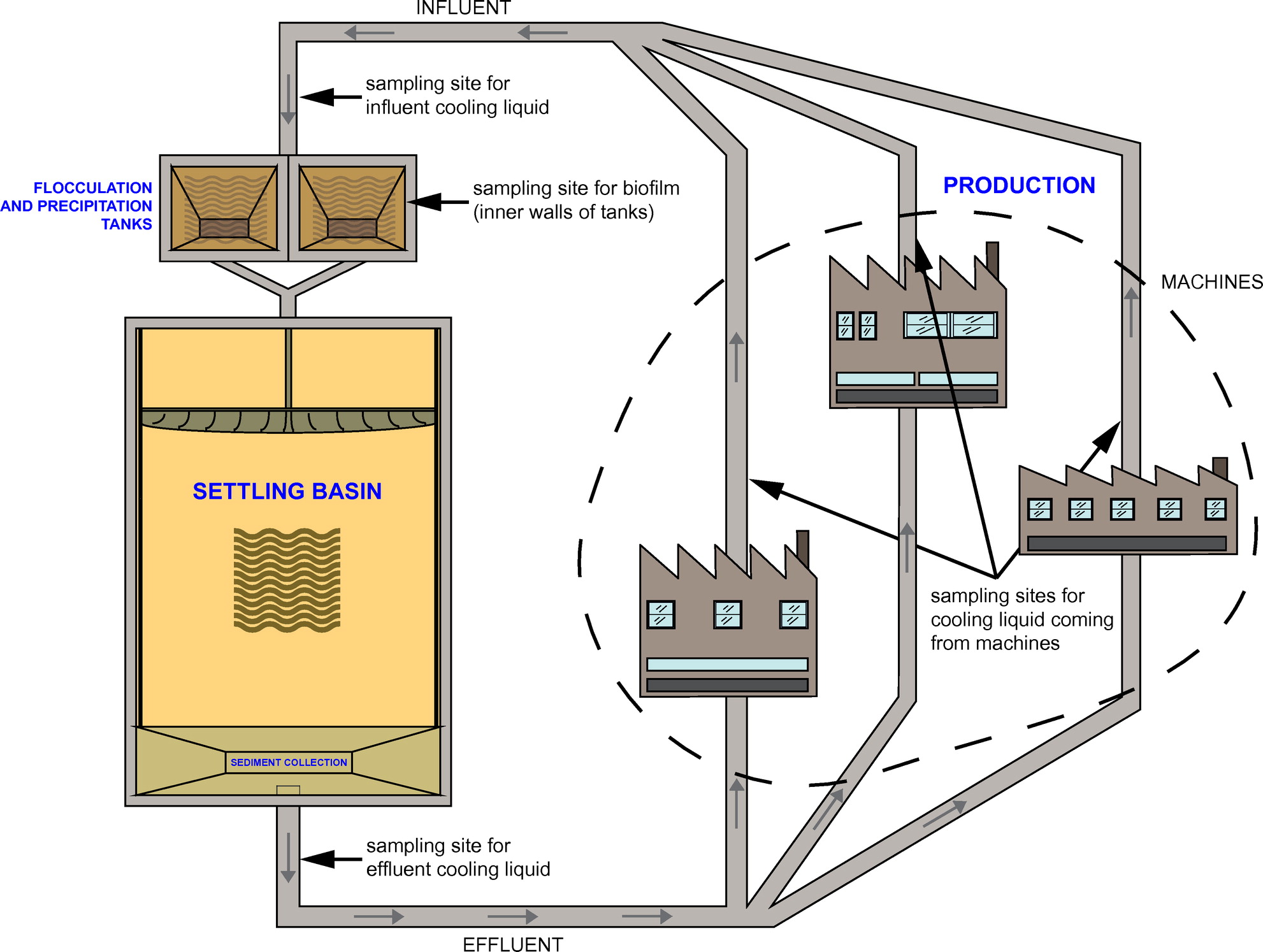 Microbiota in a cooling-lubrication circuit and an option for controlling triethanolamine biodegradationThomas Klammsteiner, Heribert Insam, and Maraike ProbstBiofouling, May 2018
Microbiota in a cooling-lubrication circuit and an option for controlling triethanolamine biodegradationThomas Klammsteiner, Heribert Insam, and Maraike ProbstBiofouling, May 2018Cooling and lubrication agents like triethanolamine (TEA) are essential for many purposes in industry. Due to biodegradation, they need continuous replacement, and byproducts of degradation may be toxic. This study investigates an industrial (1,200 m³) cooling-lubrication circuit (CLC) that has been in operation for 20 years and is supposedly in an ecological equilibrium, thus offering a unique habitat. Next-generation (Illumina Miseq 16S rRNA amplicon) sequencing was used to profile the CLC-based microbiota and relate it to TEA and bicine dynamics at the sampling sites, influent, machine rooms, biofilms and effluent. Pseudomonas pseudoalcaligenes dominated the effluent and influent sites, while Alcaligenes faecalis dominated biofilms, and both species were identified as the major TEA degrading bacteria. It was shown that a 15 min heat treatment at 50°C was able to slow down the growth of both species, a promising option to control TEA degradation at large scale.
@article{klammsteiner_microbiota_2018, title = {Microbiota in a cooling-lubrication circuit and an option for controlling triethanolamine biodegradation}, volume = {34}, copyright = {Creative Commons Attribution-NonCommercial-NoDerivatives 4.0 International License (CC-BY-NC-ND)}, issn = {0892-7014, 1029-2454}, url = {https://www.tandfonline.com/doi/full/10.1080/08927014.2018.1468887}, doi = {10.1080/08927014.2018.1468887}, language = {en}, number = {5}, urldate = {2018-07-11}, journal = {Biofouling}, author = {Klammsteiner, Thomas and Insam, Heribert and Probst, Maraike}, month = may, year = {2018}, publisher = {Taylor & Francis}, pages = {519--531}, dimensions = true, } -
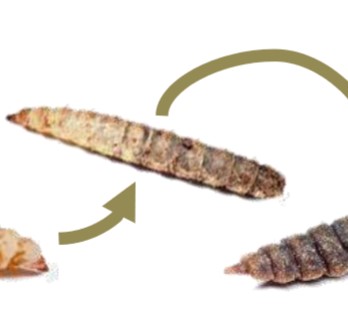 Vom Abfall zum Futtermittel: Maden als ProteinquelleThomas Klammsteiner, Carina D. Heussler, Andreas Walter, and Heribert InsamBiobased Future - Mitteilungsblatt über Biomasse für Energie und Industrie in einer nachhaltigen Wirtschaft, Apr 2018
Vom Abfall zum Futtermittel: Maden als ProteinquelleThomas Klammsteiner, Carina D. Heussler, Andreas Walter, and Heribert InsamBiobased Future - Mitteilungsblatt über Biomasse für Energie und Industrie in einer nachhaltigen Wirtschaft, Apr 2018@article{klammsteiner_proteinquelle_2018, title = {Vom Abfall zum Futtermittel: Maden als Proteinquelle}, volume = {9}, copyright = {All rights reserved}, shorttitle = {Biobased {Future}}, url = {https://nachhaltigwirtschaften.at/resources/iea_pdf/reports/biobased-future-april-2018.pdf}, language = {German}, journal = {Biobased Future - Mitteilungsblatt über Biomasse für Energie und Industrie in einer nachhaltigen Wirtschaft}, author = {Klammsteiner, Thomas and Heussler, Carina D. and Walter, Andreas and Insam, Heribert}, month = apr, year = {2018}, publisher = {Bundesministerium für Verkehr, Innovation und Technologie}, keywords = {AGIV}, pages = {11}, dimensions = true }